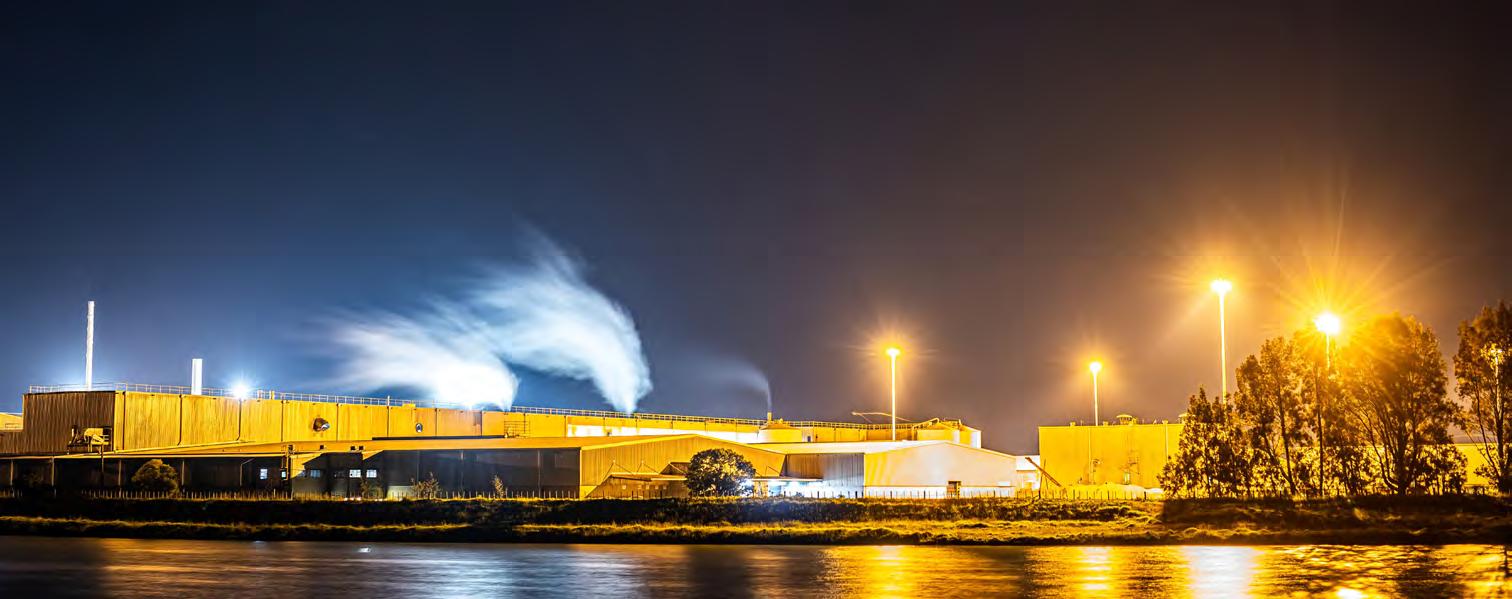
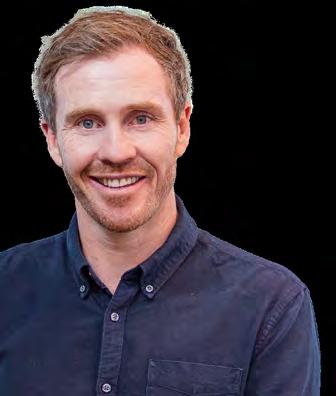
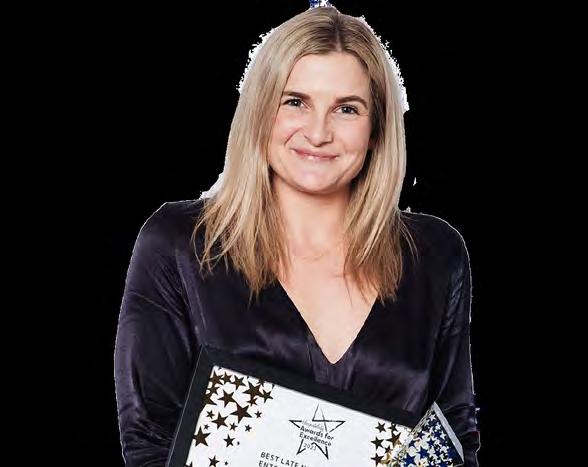
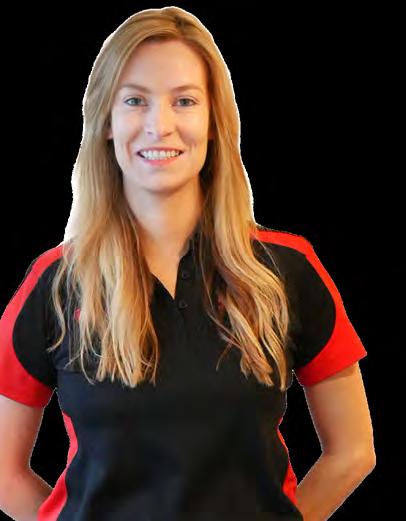
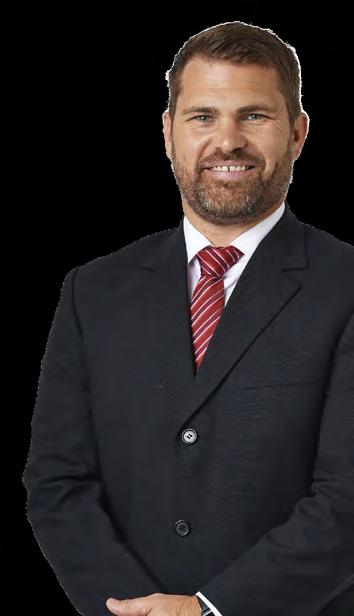

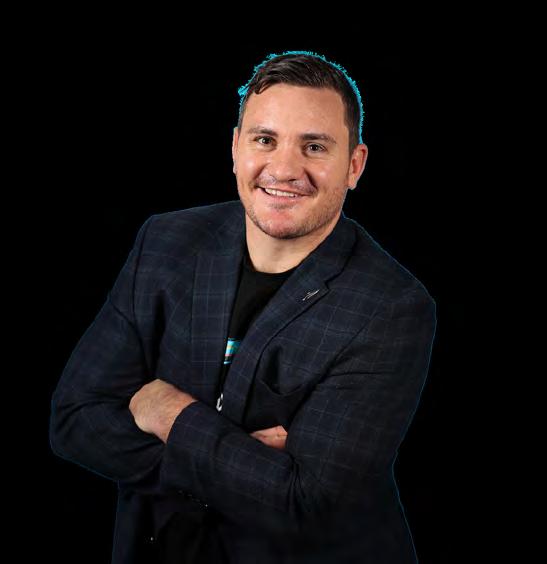
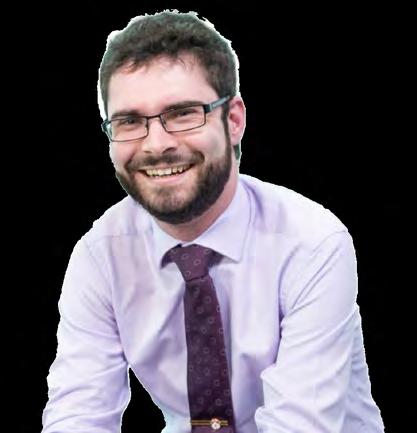
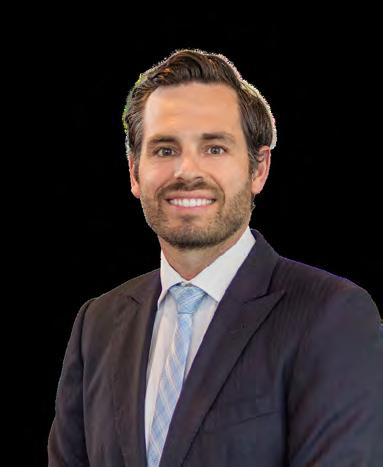
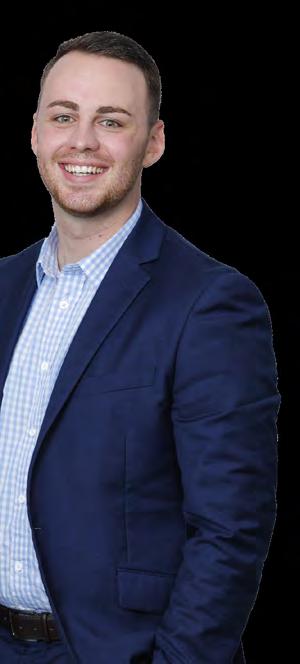
Beyond reasonable doubt, it’s the start of an exciting new era.
Tauranga’s Mackenzie Elvin joins Tompkins Wake.
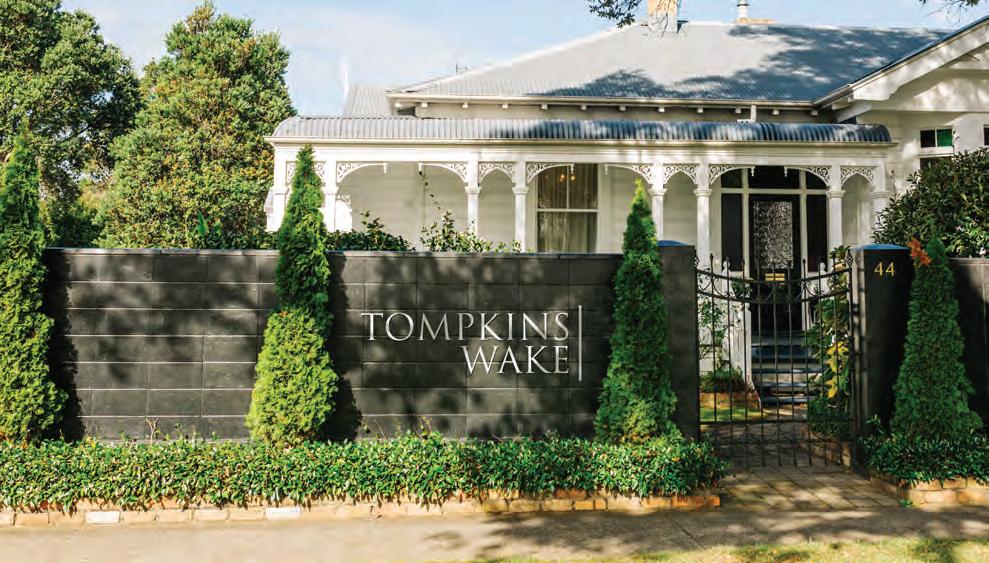
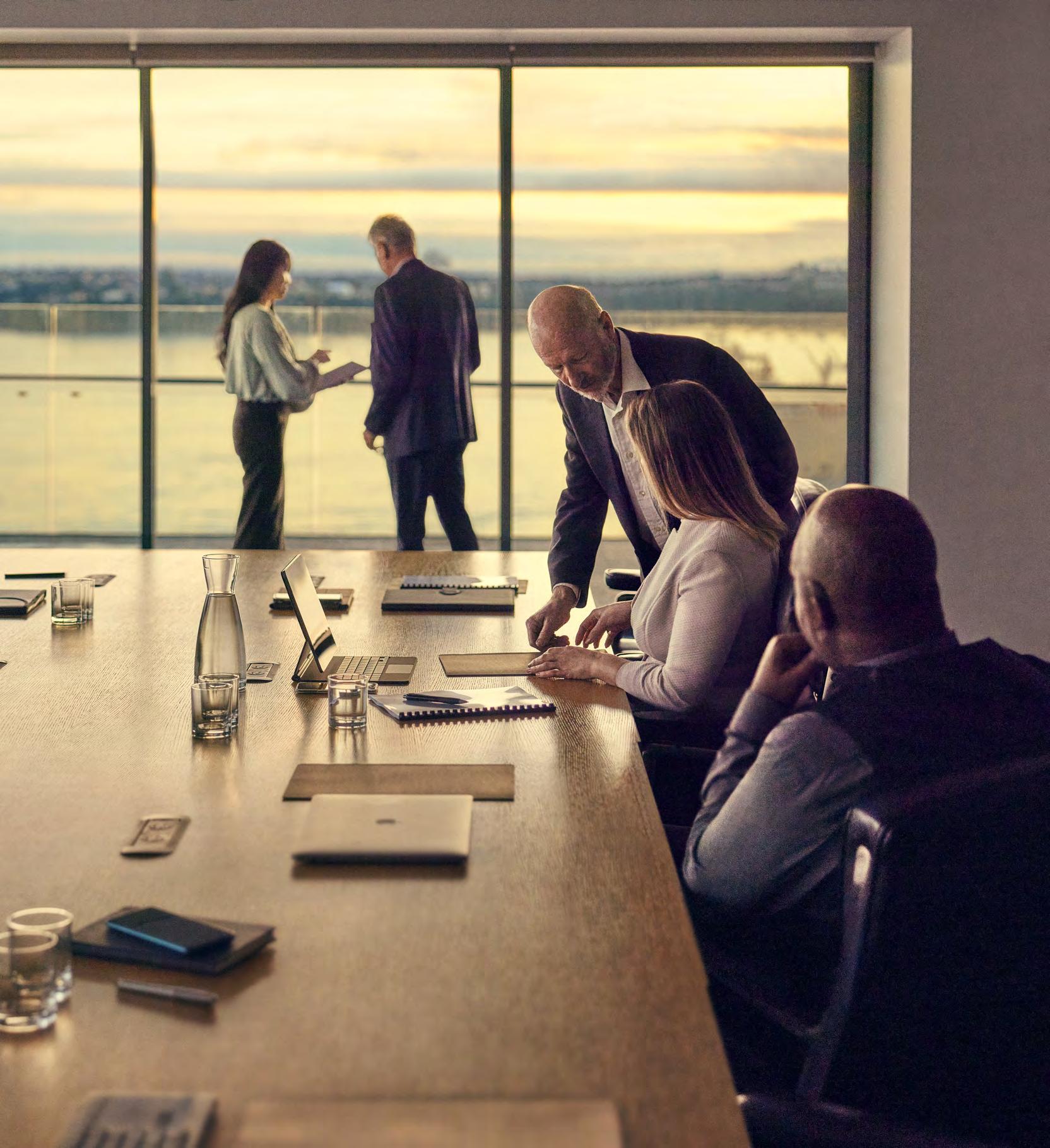
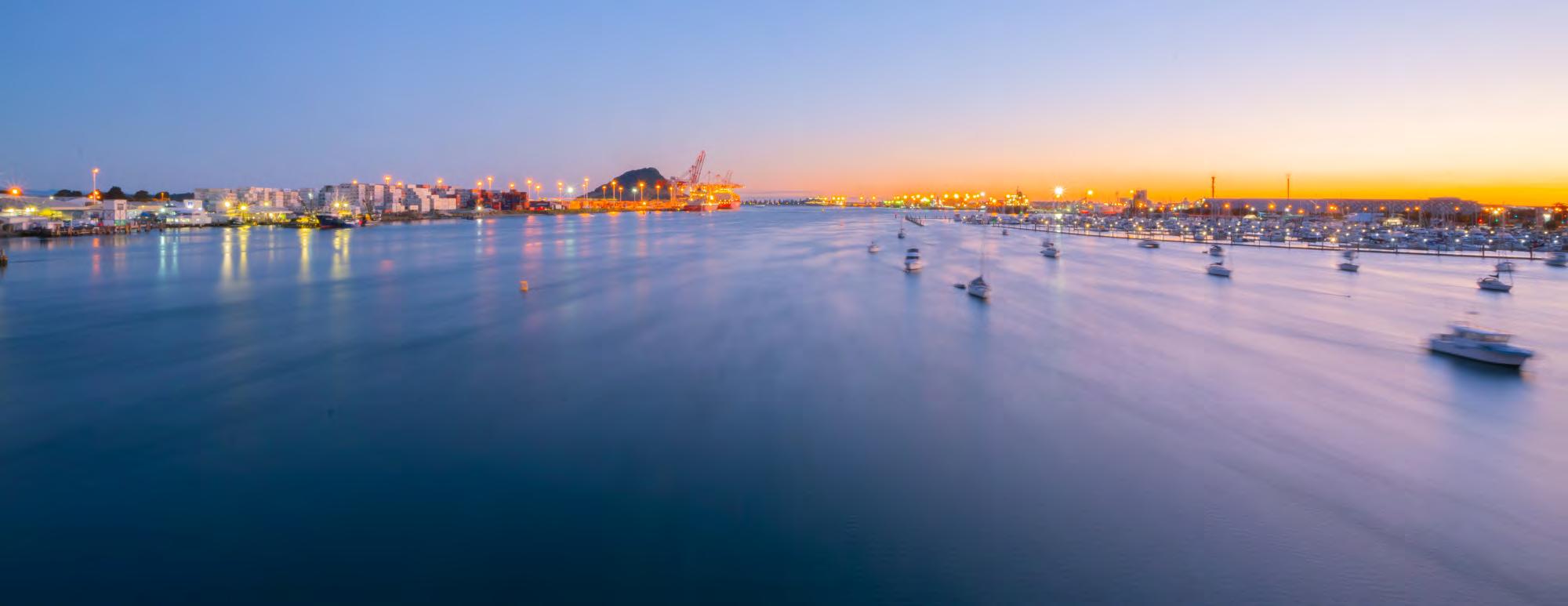











Beyond reasonable doubt, it’s the start of an exciting new era.
Tauranga’s Mackenzie Elvin joins Tompkins Wake.



auranga law firm Mackenzie
Elvin is officially part of Tompkins Wake, with the two firms merged and operating as one.
The merger marks a strategic move by Tompkins Wake to strengthen its presence in Tauranga and the wider Bay of Plenty region, which has experienced rapid economic growth in recent years. With Tauranga emerging as a hub for business and innovation, the merger between these two firms offers an exciting opportunity to provide an unmatched level of service within the golden triangle.
Tompkins Wake Chief Executive Jon Calder says the merger presents significant growth opportunities for both firms, as they combine their respective strengths to create a formidable legal powerhouse in Tauranga and the wider Bay of Plenty.
“We are delighted to announce the
acquisition of Mackenzie Elvin by Tompkins Wake.
“This merger not only strengthens our presence in one of New Zealand’s fastest growing cities but also reinforces our commitment to providing legal services of the highest calibre to our clients across New Zealand’s economic and commercial heartland,”
Jon says.
Effective August 1, Mackenzie Elvin Law’s 23 staff and 5 Partners will join Tompkins Wake, boosting the Tauranga-based team to 34 with over 200 professionals firmwide, including 35 partners and over 120 lawyers.
Mackenzie Elvin Law Founding Partner Fiona Mackenzie says the merger represents an exciting milestone for their firm, clients and the local community.
The merger will enable Mackenzie Elvin’s local team to leverage the
This merger not only strengthens our presence in one of New Zealand’s fastest growing cities but also reinforces our commitment to providing legal services of the highest calibre to our clients across New Zealand’s economic and commercial heartland.” – Jon Calder
national and global resources, expertise, and connections provided by Tompkins Wake, ensuring exceptional client service for the Bay of Plenty, both now and into the future.
“Our business in 2023 is vastly different to what it was in the 1980’s. In the last three years especially we’ve seen profound change as global events have affected every corner of the
world. Against this backdrop, aligning with Tompkins Wake is a natural progression for us,” Fiona says.
“We have long admired their reputation and expertise. This merger opens up new horizons for us in terms of resources and expertise, their values and progressive approach to client service closely mirroring our own, and we are very pleased that this
partnership will bring immense benefits to our clients, team, and local community.”
Jon Calder says Tompkins Wake shares the same admiration. The firm has worked across from Mackenzie Elvin on many occasions and has long admired the reputation and practice Fiona and her fellow partners have built.
“What became very apparent as we got to know the Mackenzie Elvin partners is that our values are closely aligned. We have four core values, the most important of which is People Matter for us that’s our people and our clients. It was clear to us that Mackenzie Elvin is a firm that values its people and puts them first, and that for us was an important piece.
“With a strong culture and people focused firm, we deliver exceptional service and results for our clients.”

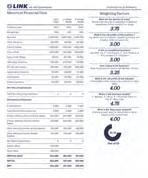


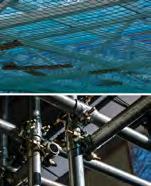




CONTACT INFORMATION
PUBLISHER
Alan Neben, Ph: 021 733 536
Email: alan@bopbusinessnews.co.nz
EDITORIAL
Alan Neben, Ph: 021 733 536
Email: editor@bopbusinessnews.co.nz
PRODUCTION – Copy/Proofs/Graphic Design
Times Media – Clare McGillivray
Email: clare@times.co.nz
ADVERTISING
Pete Wales, Mob: 022 495 9248
Email: pete@bopbusinessnews.co.nz
ELECTRONIC FORWARDING
EDITORIAL: News releases/Photos/Letters: editor@bopbusinessnews.co.nz
GENERAL INQUIRIES: info@bopbusinessnews.co.nz
Bay of Plenty Business News has a circulation of 8000, distributed throughout Bay of Plenty between Waihi and Opotiki including Rotorua and Taupo, and to a subscription base. www.bopbusinessnews.co.nz
Bay of Plenty Business Publications
309/424 Maunganui Rd, Mt Maunganui, 3116 Bay of Plenty Business Publications specialises in business publishing, advertising, design, print and electronic media services.
Iam grateful to Australian rockers Midnight Oil for the title of this month’s column. I apologise to readers for again returning to the subject of climate change. But I fear we have entered a period of global warming from which turning back will prove difficult if not impossible.
Many years ago, I was skippering a yacht from Malaysia to Hong Kong with my young son as the sole crew. Although the voyage was eventually successful, it included more than a few dramas. I wrote off the inclement weather we experienced at the time to our being caught out in an El Nino effect, which had begun the previous year and stretched into the year of the voyage.
While additional research over the years has established that indeed the El Nino and the La Nina surges do affect the weather, the reality is that the climate change we are now experiencing is largely created by human practices. And unfortunately, those in the world who are best positioned to affect climate change, seem unwilling to do so.
hotter

“How can we dance when our earth is turning? How do we sleep while our beds are burning?”
– Peter Garrett, Jim Moginie and Rob Hirst
reports in July reported the hottest temperatures recorded globally. According to the Guardian newspaper amongst others, the temperature on July 3 was the hottest on record ever, with the average global temperature reaching 17.01C (62.62F).
the supposedly “advanced” US.
And spare a thought for those millions of people who, as a result of their poverty and soaring populations, simply do not have recourse to air conditioning or even sufficient healthy water supplies to ease their suffering.
All of this can seem rather distant to those of us living in New Zealand where, arguably, too much heat seems to be the least of our problems. We have, after all, been recently blasted by cyclones. And here in Tauranga, I find myself frequently cold and shivering. Also let us remember, we are rather far down the globe, and nearer to the Antarctic than to the topics. But even the Poles are warming and the ice cover is melting.
New Zealand is narrow and long and we are already seeing the impact of rising seas on our coastal regions, which have previously long commanded a premium for house-owners.
Our monitoring experts, as reported by NIWA, have already documented the retreat of New Zealand’s glaciers and snowlines. This has impacted winter sports and tourist visits.

cies. And warmer waters and changing currents will impact oceanic productivity and the abundance of prey species like krill and plankton, the scientists predict.
We should also be very aware that New Zealand built its export reputation initially, and still relies heavily upon, its efficient primary industry sector. With the expected rise in more frequent extreme weather events, primary industries might expect to face increasing risks.

In case you missed last month’s edition Scan to subscribe

We have recently been directly faced by an unavoidable example of the reality of climate change. A multiplicity of news
The northern hemisphere in particular has been blasted with heat waves. We have seen out-of-control fires in Europe, and heat stroke deaths all over much of the world, including in
NIWA postulates that as New Zealand’s climate continues to warm, the amount of snow and ice on our mountains will continue to decrease. Rising seas and coastal erosion will impact all coastal spe-
Midnight Oil’s 1986 hit was a plea for justice for indigenous Australians, and co-writer Peter Garrett eventually went on to serve as an environment minister. The song offered its international audience an alternative view of outback Oz culture. It remains a prescient warning of the dangers all countries are now facing.

Heavy Vehicle and Machinery Services (HVMS) and Advanced Electric Machines (AEM) have announced a strategic partnership aimed at accelerating decarbonisation efforts within New Zealand’s heavy vehicle industry. HVMS, a New Zealand company, based in the Bay of Plenty, specialising in low carbon heavy vehicle conversions, has joined forces with AEM, a leading UK manufacturer of ‘rare-earth free’ and recyclable electric motor systems.
HVMS directors Richard Gatward, Scott Hale, and Wayne Crouch, bring a wealth of experience and expertise to the partnership.
The company is dedicated to assisting companies in decarbonising their fleets through the conversion of existing diesel assets to electric drivetrain systems, powered by either batteries or hydrogen fuel cells. With its deep understanding of the New Zealand heavy vehicle industry, HVMS is well-positioned to support the transition to sustainable transportation solutions.
AEM, renowned for its innovative electric motor technology, offers ‘rare-earth free’ electric motors that have gained global recognition. These motors, which remove the need for rare-earth metals and copper in their design, are currently integrated into various electric vehicles, including the Tevva electric truck. AEM’s motors are also being used in development projects with sev-
eral global vehicle manufacturers, such as Bentley, SAF Holland, CNHi and AsiaCab. The partnership with HVMS opens opportunities to expand AEM’s presence in Australasia and explore new markets.
“We are excited to collaborate with AEM to drive decarbonisation efforts in the heavy vehicle industry,” said Mark Irving, business development manager of HVMS.
“Our partnership brings together HVMS’s expertise in heavy vehicle conversions and AEM’s cutting-edge electric motor systems. Together, we

can offer comprehensive solutions to companies looking to lower emissions and transition to electric drivetrains.”
The partnership agreement includes HVMS becoming the exclusive indirect sales distribution agent, as well as the maintenance and repair agent for AEM equipment and technology in the heavy vehicle, machin-
Our partnership brings together HVMS’s expertise in heavy vehicle conversions and AEM’s cuttingedge electric motor systems. Together, we can offer comprehensive solutions to companies looking to lower emissions and transition to electric drivetrains.”
By DAVID PORTER
The Whakatane Mill Ltd (WML) is poised to restart expanded operations in August after surviving a closure scare in 2021, said executive chairman Ian Halliday.
Full production was expected to be achieved by November 2023. The mill secured a substantial private investment of over NZ$70 million from its shareholders, Halliday told Bay of Plenty Business News.
“It’s been great news for the company and for the local community,” said Halliday, who is one of the shareholders. “A large part of the work at the moment is going into local companies, the majority of them New Zealand-based and including East Bay contracting companies. There is a lot of money going back into the community here.”
This marked the most significant capital expenditure for WML since 2004 and is facilitating a major upgrade, elevating the mill to industry-leading standards.
Halliday said the timing had worked out well and when they did the deal the market was slow. The group of private investors acquired the mill in 2001 when it was facing closure. That gave them plenty of time to organise the rebuild.
“The first year prompted us to look at the operation

Ian Halliday
and we felt there was enough capacity in the market for us to look at our output,” said Halliday. “The decision was taken in November 2021. We started the engineering process in February 2022 and most of the equipment was on long delivery times.”
That gave the mill plenty of time to manage the rebuild starting in late June, which was now well underway and was scheduled to open for normal operations in August this year.
The upgrade will deliver an additional 50,000 tonnes of premium folding box boards, increasing WML’s production from 150,000 to 200,000 tonnes. In a statement, the mill said customers would enjoy the advantages of higher quality board, while the production process will be more environmentally friendly, utilising less raw materials and operating with improved
energy efficiency.
The upgrade is paving the way for WML to potentially produce up to 300,000 tonnes of premium folding box board in the future, the company said.
Halliday noted that all staff were still working on the site as there had been a tremendous amount of other work to do in the course of the upgrades. That included a lot of training on the new equipment and some workers had also been working side by side with the construction staff.
Per tonne of board, the energy efficiency will be approximately 30 percent better, gas consumption will be reduced by more than 30 percent and WML’s water consumption from the local river will also see a significant decrease.
Additionally, WML will eliminate plastic consumption by transitioning from plastic to paper wrap for packaging of its finished products. The heat recovery system will contribute significantly to WML’s ESG profile.
As the sole folding box board producer in Australasia, the mill’s improvements offer main brand owners the chance to reduce their carbon footprint and avoid importing packaging from countries like Finland, Korea, China, and Chile. This move towards sustainability presented a positive environmental impact, the company said.
ery, and automotive sectors within the Australasian region.
HVMS will seek projects that utilise AEM equipment, and both companies will collaborate on developing business opportunities and increasing awareness of the AEM range throughout Australasia.
“We believe that this partnership will play a crucial role in promoting sustainable transportation and reducing carbon emissions in New Zealand,” said James Widmer, CEO, and co-founder of AEM.
“By leveraging HVMS’s industry knowledge and client base, combined with AEM’s advanced electric motor systems, we can drive the adoption of electric drivetrains in the heavy vehicle industry, contributing to a cleaner and greener future.”
The collaboration between HVMS and AEM aligns with the global focus on decarbonisation and sustainable practices.
Both companies are committed to supporting companies in their transition to electric drive trains and are exploring opportunities for localising production and assembly of AEM equipment using Australasian sourced materials.
This partnership aligns with the recent UK-NZ Free Trade Agreement announcement and the visit of UK Trade Envoy – David Mundell MP to Tauranga on 10th June 2023. It highlights the shared commitment between the UK and New Zealand to foster sustainable economic growth and combat climate change through innovative collaborations.
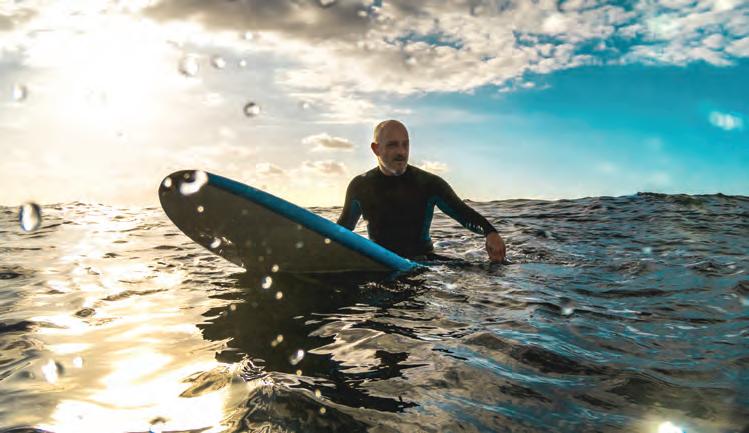
If you’re contemplating a change of career, why not consider owning your own franchise business?
With direct access to over 30 well-known franchise brands in locations all around the country, it’s quite likely we have the business opportunity that perfectly fits your lifestyle.
Iridium Partners help potential franchisees research, evaluate and navigate the franchise industry to find the perfect opportunity for you.
Contact us today and get some balance back in your life.
Call Meredith on +64 21 209 9496 info@iridium.net.nz www.iridium.net.nz
As the world transitions towards a more sustainable future, New Zealand is quietly emerging as a leader in embracing battery electric vehicles (BEVs). One of the crucial aspects of this shift is the development of a robust BEV charging network that allows BEV owners to explore the country with confidence.
By MITCHELL HANCOCK Lexus of Tauranga
In recent years, New Zealand has witnessed remarkable progress in expanding its EV charging infrastructure. The government, in partnership with private companies, has been instrumental in developing a nationwide network of public charging stations. As of July 2023, New Zealand has 388 public chargers for BEVs (according to NZTA), up from just 20 at the end of 2016.
Aside from Level 1 Charging using a standard household plug at home overnight, from cities to rural areas and scenic routes, public charging options have become increasingly accessible. There are two main types of public charging stations:
• Level 2 Charging: Often called destination chargers, these chargers offer a faster charging rate, supplying approximately 20-30 km of range per hour. Level 2 chargers are found at shopping centres, public parking lots, and various other locations. They are ideal for topping up your EV’s battery during errands or shorter stops.
• DC Fast Charging (DCFC): The most rapid charging option, DC fast chargers can charge a
BEV to 80% in just 20mins to 1 hour (depending on the vehicle). These chargers are typically located along highways, enabling long-distance travel without range anxiety.
To make the most of New Zealand’s BEV charging network, EV owners can rely on charging apps that offer real-time information about charging stations.
The simplest type are web-apps, where no download is required. EV users only need a browser and an internet connection to search for chargers near them. ChargeNet is the most popular generic web-app option in New Zealand, while some brands or manufacturers also offer a brand specific charger search tools such as www. lexus.co.nz/en/charging-locations. html for Lexus drivers.
As for native apps for use on mobile popular charging apps include ChargeNet NZ, PlugShare, and Openloop to name a few. These apps display the location, availability, and charging rates of nearby stations, making it convenient for drivers to plan their routes.
Using a charging app is simple:
1. Download the preferred app from your smartphone’s app store.
2. Create an account or sign in if you already have one.

3. Enter your EV’s details, such as make and model, to receive accurate charging information.
4. Browse the map to find nearby charging stations or search for specific locations.
5. Reserve a charging spot (if available) or navigate to the chosen station.
Beyond just locating charging stations, some apps also facilitate contactless payments, ensuring a seamless experience for EV owners. In addition to charging apps, BEV
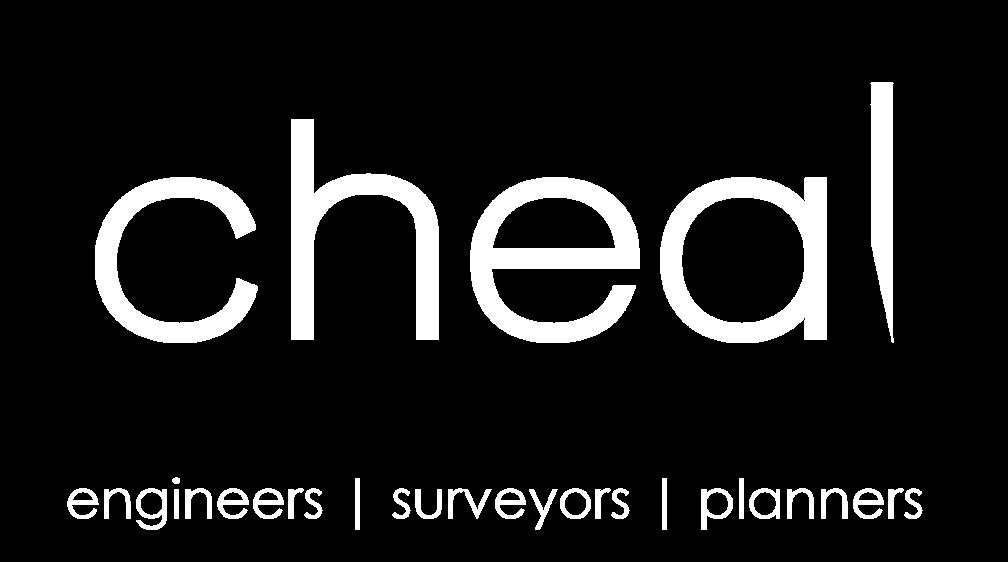
experience Cheal’s award winning service,

drivers can take advantage of innovative services like A Better Route Planner (BRP). BRP is an intelligent trip planner designed exclusively for electric vehicles. It factors in realtime data to calculate the most efficient and optimal routes.
The Better Route Planner has been a game-changer for EV owners, as it minimises range anxiety and ensures a stress-free journey, even for longer distances.
New Zealand has made significant strides in establishing a com-
prehensive BEV charging network, making it a beacon of sustainability in the transportation sector. Charging apps and services like A Better Route Planner further enhance the EV ownership experience, empowering drivers to explore the beauty of New Zealand without compromising their environmental values. As technology continues to advance, we can expect an even more seamless and efficient charging infrastructure in the future, supporting the nation’s commitment to a greener tomorrow.
TECT has confirmed its largest-ever funding investment towards a project of regional significance, approving a $21 million grant for Tauranga city centre’s new civic precinct.
The future civic precinct, Te Manawataki o Te Papa, will include a library and community hub, civic whare (public meeting house), museum and exhibition gallery.
TECT’s funding is specifically allocated to support the development of the museum and exhibition gallery, adding significant cultural, educational and economic value to the city.
Earlier this year, TECT asked people living in the Tauranga City Council and Western Bay of Plenty District Council regions for their thoughts on their draft strategy and proposed funding plan, including providing funding towards the civic precinct.
The community feedback signalled strong support for funding strategic initiatives, including almost 70 per cent in support of TECT making a contribution to the civic precinct development.
Having considered this feedback, TECT Trustees approved in principle funding of $21 million to be made available to support Te Manawataki o Te Papa – subject to a funding agreement.
TECT Chairman Bill Holland congratulates Tauranga City Council for the huge amount of work and vision

involved in creating this community space and says the Trust is looking forward to working closely with Tauranga City Council and the Te Manawataki o Te Papa Limited Board to progress the development.
“As a community-focused trust, TECT aims to support initiatives that contribute to our region’s vibrancy, connectedness, growth and economic success. Te Manawataki o Te Papa certainly ticks all of the boxes,” says Bill.
“This is one of the most exciting and significant projects the people of Tauranga will see come to fruition in their lifetime.
“We’re excited to see the transformational impact this project will have on our city and are committed to working with Council to ensure the best outcomes for our city.”
Council Commission Chair Anne Tolley says TECT’s funding commitment to Te Manawataki o Te Papa is hugely important for the project and the people of Tauranga.
“We are extremely grate-
ful to be receiving a grant of this magnitude from such an important community funding organisation in the Western Bay,” says Anne.
“This financial contribution is a huge step towards realising our funding goals. The resounding support TECT received about Te Manawataki o Te Papa reinforces the message we’ve also heard from people right across the region – that they want to see this project brought to life, so generations today and in the future can enjoy and benefit from what is set to become an incredible community space.” The news came as Tauranga City Council’s Commissioners were set to make key decisions about the future of the civic precinct at a Council meeting on Monday, 24 July.
Subject to those decisions, construction of the civic precinct could kick-off early next year, with the library and community hub the first building to be developed. The full programme of work is currently set to be completed by the end of 2028.

Over the past few years, businesses all around New Zealand have been under pressure and feeling the economic pain and this is likely to continue with New Zealand’s economy entering recession in the March 2023 quarter.
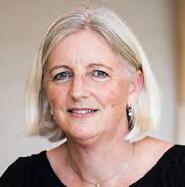
This has led to a rise in the number of liquidations of companies, including some high-profile ones in the construction sector.
Not all liquidations are instigated by Inland Revenue, but we are seeing a rise in the number of those that are. Inland Revenue takes a particularly dim view of taxpayers that don’t pay PAYE and GST on time.
Even when times are tough, it is important to keep your tax affairs in order as the cost of interest and late payment penalties can add up quickly. So, what can you do to help keep in Inland Revenue’s good books?
> BY ANDREA SCATCHARD
Andrea Scatchard is a Tax Partner at Deloitte, based in the Bay of Plenty. She can be contacted on ascatchard@deloitte.co.nz
Keep on top of filing your returns
During challenging times, you need to keep up to date with the filing of all your returns even if paying the associated tax is difficult, to avoid late filing penalties being applied. Late payment penalties from $50 to $500 so can quickly add up if you are late.
Make sure you avoid UOMI
Use of Money Interest (UOMI) is paid by either the Commissioner or a taxpayer when tax is under or over paid and applies to most taxes. The current rate charged by the Com-
missioner on under payments is 10.39% and the rate paid on over payments is 3.53%. The high interest rate charged gives incentive to ensure payments are made on time to minimise your overall interest costs.
Provisional tax payments and tax pooling
Provisional tax payments due are primarily paid based on an uplift from the most recent income tax return which has been filed.
If you are forecasting that your results for the 2024 year will be worse than 2022 or 2023, then paying provisional tax based on the uplift
method may not be best from a cashflow perspective. While you can estimate your current year liability and pay a lower amount based on that estimate, we don’t usually recommend this as it exposes you to possible penalties if that estimate turns out to not be fair and reasonable when you get to the end of the year.
A better option is to make use of tax pooling. Tax pooling intermediaries operate tax pooling accounts with Inland Revenue, allowing taxpayers to deposit income tax payments into tax pooling trust accounts which are then transferred to Inland Revenue once the tax returns have been
filed and the final tax liability known.
Tax pooling is particularly useful when there are decreasing profits or missed payments. It can also allow taxpayers to postpone tax payments (at a competitive interest rate) to free up working capital or better match your cashflow if you have a seasonal business.
Set up instalment arrangements
If your business is unable to meet any of your tax payments on time you may be able to apply for an instalment arrangement to pay the debt off over time.
It is important to be talking about this as an option with Inland Revenue before your payments fall due, not once they are already overdue. Essentially you will need to agree on an instalment amount and payment start and end dates.
Inland Revenue may ask for financial information to support the application that tax payments can’t be made. But the overriding condition is that you will need to agree to pay the tax as quickly as possible. In other words, this is not a holiday or deferral from paying tax. A 1% penalty (instead of potentially 5%) will still be applied upfront, but Inland Revenue has discretion to remit this down the track if the business complies with the arrangement.
In tough times, tax obligations can cause extra strain on business cash flow and liquidity.
It is important to make sure you keep communicating with the IRD to avoid penalties, fees and liquidation commencing. Make use of the options available and if you have any questions or would like help navigating options available to you, please seek advice from your tax accountant or adviser.

Spring Papamoa features 10 high-end commercial units at 27
Toorea Street, within Papamoa’s newest and most significant commercial development – Papamoa Junction.
The plan for the wider Papamoa Junction includes retail, office, hospitality, medical, trade supply and residential.

> BY GEOFFREY CAMPBELL
Geoffrey Campbell is a director of The Why Marketing.
He can be reached at hello@thewhy.nz or 022 058 7214
rand awareness extends beyond mere recognition of your business. It involves crafting a unique identity that resonates with your customers and distinguishes you from your competitors.
It’s the driving force behind customers choosing your brand over others, even when similar products or services are available. It’s crucial to differentiate this from personal branding, as both concepts are distinct and necessitate entirely different strategies.
Brand awareness cultivates customer loyalty, propels business growth, and provides a competitive advantage. When customers are familiar with
your brand, they’re more likely to select your products or services over your competitors.
A common misconception is that brand awareness in today’s digital age is solely about online presence. However, this is a mistake we see every day. Brand awareness encompasses all customer interactions with your brand, both online and offline. Tangible touch points are still equally as important as anything digital.
At The Why Marketing, we’re dedicated to empowering New Zealand businesses by enhancing their brand awareness. We firmly believe that every business, irrespective of its size, deserves visi-
bility and recognition.
We value collaboration and work in close partnership with our clients, functioning as an integral part of their team. We trust in the power of collaboration to devise effective marketing strategies. These strategies include budget optimisation, ensuring clients are using their marketing budgets to optimal efficiency.
Why are branded promotional products a vital component of every company’s brand awareness strategy? Branded promotional products effectively augment brand visibility. They convert everyday items into potent marketing tools that foster enduring relationships with customers.
If they don’t know who you are, what you do, and why you do it, you have to convince them rather than just convert them.” – Geoffrey Campbell, Director, The Why Marketing
These products act as constant reminders of your brand, promoting customer loyalty and shaping brand perception. Be it a branded pen, a coffee mug, or a tote bag, these items keep your brand at the forefront of your customer’s minds, subtly reinforcing your brand message each time they’re used.
To make these opportunities readily available to SMEs at any stage of their business growth, we’ve developed a Virtual Marketing Officer (VMO) service.
This service is designed to deliver a comprehensive brand
awareness experience. Our expert VMOs function as an extension of your team, providing specialised marketing strategies tailored to our client’s business objectives.
Whether our clients require a full-fledged brand awareness campaign or assistance with specific tasks, our VMO service offers flexibility, scalability, and cost-effectiveness.
This allows you to access specialised marketing expertise at a fraction of the cost of hiring a full-time employee or agency.
Our VMOs assist clients in effectively utilising both digital and traditional marketing

tools, guiding you through the marketing landscape.
This holistic approach ensures that every facet of your marketing strategy collaboratively works to enhance brand awareness and stimulate business growth.
Brand awareness is pivotal for business success, and both branded promotional products and our VMO service play significant roles in achieving this. They offer cost-effective and impactful methods to keep your brand at the forefront of your customer’s minds, fostering loyalty and driving business growth.
By RICHARD RENNIE
SunGold kiwifruit growers are reacting with anger and frustration at latest moves by district councils throughout the Bay of Plenty and beyond to hike rates by 30-50 percent after a recent High Court ruling was upheld.
The increase is being felt this winter as Western Bay of Plenty District Council growers get their final rates valuations which determine rate amounts for the coming three years.
The increase has come about through action taken by Gisborne District Council (GDC) two years ago to have the SunGold kiwifruit licence value included as part of a property’s rateable valuation.
In the past council rates valuations only included kiwifruit vines but did not distinguish between Green and SunGold.
New Zealand Kiwifruit Growers Incorporated (NZKGI) supported court action against the council. The council’s decision to take action against grower Tim Tietjen went as far as the Court of Appeal.
However, the Court of Appeal ruled in early July the GDC’s move was legal and has prompted other councils to continue with ratings charges based on the hike, pushing growers well into double digit rises.
NZKGI CEO Colin Bond said the issue has prompted more calls to the organisation than any other. Grower anger at the move was on the rise as more realised it extended beyond Gisborne to include all key growing areas, but particularly Western Bay where 80% of SunGold fruit are grown.
Opotiki based grower Adrian Gault has kiwifruit interests across the district
councils of Gisborne, Opotiki, Whakatane and Western Bay of Plenty. He is anticipating a rates bill almost double that last one now the SunGold licences are included.
Rates on his 4.8ha Opotiki orchard have surged from $8000 a year six years ago to almost $18,000 this year.
“Over the last 10 years the increase amounts to 20% a year, with no additional services provided. It is robbery,” he said.
A spokesman for valuation company QV tasked with revaluing Western Bay properties confirmed the SunGold licence has been included for growers in the district area. As a result SunGold kiwifruit orchards are experiencing a 50% increase in value over the 2019 valuation as a result. This was reported as similar to the growth in urban values.
However, urban ratepayers on average have only experi-
enced a 7% rise in their rates.
Gault said growers are used to accepting they often pay a disproportionate amount of a district’s rates, given the low level of service they may receive in return.
However, the ex-Opotiki District councillor said he was disturbed at the targeted nature of the SunGold licence, and it appeared to be the equivalent of a wealth tax.
However, it was coming at a time when growers were under the hammer with significant rises in costs, static SunGold returns and severely diminished Green returns. He faced losses of almost $400,000 this year across 8ha of Green orchard crop.
Colin Bond said growers have had to accept they have no further legal pathways to oppose the council rates hike, but there were other options NZKGI was encouraging them to pursue.
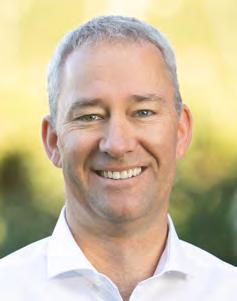
“Growers can object to councils about their rates valuation of their property and seek a revaluation of it.
“Secondly, we will be approaching councils who have the final decision on how they implement this decision. They do have the opportunity to soften the impact upon growers.”
Adrian Gault said councillors needed to have greater understanding about rates
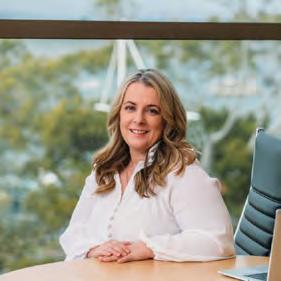

mechanisms before reaching for the simplest, bluntest tool in the toolbox which was an outright rates increase.
“Not enough take the time to examine all the options out there, including targeted charges.”
NZKGI would also be writing to QV, the property valuation company, to better understand how the ruling would be implemented fairly and consistently. The association had received complaints from growers that there were significant inconsistencies in the valuations they had encountered.
But Bond said the court decision also holds significant impacts for other licenced fruit varieties where growers pay a premium for the right to grow that particular fruit.
These included apples in particular, with some varieties including Rocket and Envy worth $80,000-$100,000 a hectare.
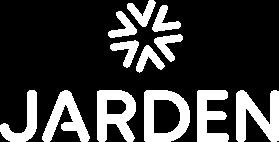

The stories behind the people in this month’s business Under 40s lineup are many and varied. We reached out to the business community and said, “Tell us about the new generation of personnel in your organisation who are really making a difference?”
The feedback was immediate. We struck gold with a crop of exceptional individuals at all levels of business from all sorts of organisations.
At a time when so much business attention is focused on inflation, high interest rates, staff shortages and the upcoming general election, it is refreshing to read their inspiring stories.
We spoke to lawyers, artists, politicians, entrepreneurs and others – the takeout message for us: despite the challenges confronting everyone right now, the future of Bay business is definitely in good hands.
Since opening Miss Gee’s Bar & Eatery in 2019, we have been faced with many speed bumps and much uncertainty.
From Covid-19, to staff shortages, to the current cost-of-living crisis, it has been an extreme four years of learning. Having the ability to adapt and learn has really helped the success of Miss Gee’s.
I did a period of mentorship with a hospitality coach who taught me some basic, but super-important elements to build into my business, and Miss Gee’s has excelled to be where it is today.
Last year we won the Outstanding Bar award at the Bay of Plenty Hospitality Awards.
I also won Future Leader of the Year at the national Hospitality New Zealand Awards for Excellence –an award for those who had less than three years’ experience in the industry.
In June this year, we took out the award for Best Late Night / Live
Entertainment Venue at the national awards again.
To win this award, especially being up against some heavy hitters in the industry, was amazing and given all the ups-and-downs over the last few years, this really feels like a great achievement.
In December 2022 I decided to join the Mainstreet Tauranga board. Being a ratepayer in the city centre, I was keen to see how I could help fellow retailers and bring change to the narrative of our struggling CBD. I was soon voted in as Chair and did not hesitate to seize the opportunity to steer the ship with some fresh ideas and guts.
I am loving being involved with Mainstreet Tauranga. There is a lot of work being done in the background that not everyone gets to see, but I am doing everything I can to relaunch our city centre to attract more businesses and create a vibrancy that our community can be proud of.
I live to help others. I have always been a team player and get real
enjoyment from seeing others succeed.
I was captain of many teams throughout my school life and grew up on a farm where I had to start working at an early age, so hard work and perseverance is in my DNA.
Being in the role of Chair for Mainstreet Tauranga has helped me to really extend my capabilities and apply myself to my community.
Throughout my career, working for my community and creating experiences for other people has given me the most satisfaction and enjoyment I have ever had.
I am passionate about giving young people the confidence to put their hands up and put forward their ideas.

Bay of Plenty local Tom Rutherford says it's a 'real privilege’ to be selected as the Bay of Plenty candidate for National. He was recently selected to take over as the candidate from current National MP for Bay of Plenty, Todd Muller, after Muller announced his plan to retire at the end of his current term.
“I have massive shoes to fill stepping into the role being vacated by Todd Muller. Todd made a big impact over the last nine years, not to mention the groundwork also done by his predecessor Tony Ryall.
“Is it intimidating to be following in their footsteps? Absolutely. Am I going to be following everything they did? Totally not. I’m my own man – I’m Tom Rutherford, I’m forging my own path. I’m not here with a personal agenda. I’m proudly here as a boy from the Bay who’s put his hand up to represent his community.“
Rutherford is experienced in communications and media, local government and policy. Most recently he worked for Rotorua Mayor, Tania Tapsell. But he is
no ‘newbie’ when it comes to the robust realities of political life having worked for the National Party in Wellington from 2017-2020.
“While I might be relatively young, I’m not politically inexperienced – I know how parliament works and I know how the Wellington political beltway operates.”
When asked if he feels at all apprehensive about the role, he is typically direct: “If I didn’t think I was up to it, I wouldn’t have put my name forward”, he says.
He takes little time in getting straight to the point: “There are three ‘Cs’ that are the big issues for Bay of Plenty voters now.”
He cites cost of living, congestion, and crime. “50 percent of our people worry about money every day. They want us to fix the economy. We have made a firm commitment to upgrade SH2 all the way through to Ōmokoroa, which includes making all four lanes available to general traffic, instead of just two as is currently planned. We must also prioritise SH29 over the Kaimai Ranges. This increasingly fragile transport
corridor is crucial in connecting our port, businesses and people with the Golden Triangle of Hamilton and Auckland.
“Here in the Bay there are two gang members for every one police officer – that is not the community most people have chosen to live in. We plan to restore law and order so our community is safe once again.
“People choose to live in the Bay of Plenty for the lifestyle, the climate and the luxury of living close to the beach, but also because our community is strongly rooted in horticulture and agriculture.
“Our people work hard and therefore want to live in an environment that helps them relax, unwind and feel safe. I’m proud to live here with my partner Hannah.”
As Bay of Plenty locals, they want their community to be the best and the safest in New Zealand.
Bay of Plenty born and bred, Rutherford is heavily involved in his local community: he is a volunteer firefighter with the Mount Maunganui Fire Station, Greerton Cricket Club captain and a New
Zealand hockey umpire and Bay of Plenty rugby referee.
“I want voters to support me to be their local MP so I can be a strong and influential advocate for them and for the entire Bay of Plenty electorate. As part of a Christopher Luxon-led National team, we will deliver for Bay of Plenty.”
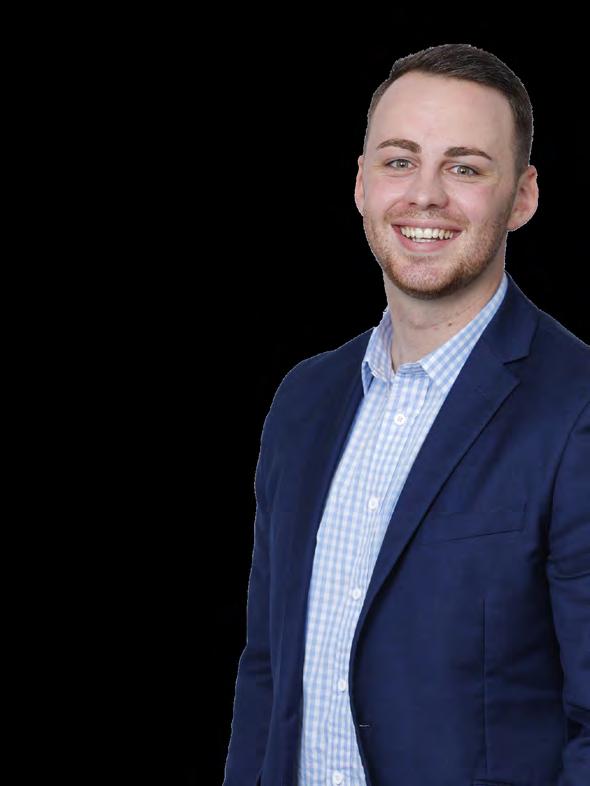
ART A ‘MUST SEE’
Arpége Taratoa (Ngāi Te Rangi, Ngāti Ranginui, Ngāti Pukenga, Ngāti Raukawa, Ngāti Rarua, Ngāpuhi) is a multifaceted creative professional with a background in fine arts and a wealth of experience in the art world. As the cultural engagement manager for Shepherdess Magazine, programme manager for Shepherdess Muster Event, marketing manager for Tātai Ora Charitable Trust, and a freelance writer, Arpége brings both critical and creative thinking to her work.
Arpége’s artistic journey began at Massey University in Hamilton, and she later transferred to Elam School of Fine Arts in Auckland, where she completed her Bachelor of Fine Arts (with Honours) and a Postgraduate Diploma in Māori Visual Arts. She progressed into a career as a lecturer, curator and creative director, and currently sits on Creative Bay of Plenty’s Board of Trustees.
After living in Auckland while she completed her studies, and then a brief stint in Rotorua, Arpége
returned to the Bay of Plenty, a location that holds special significance for her due to her ancestral connections. Settling in semi-rural Ōmokoroa, the natural beauty of our region, particularly the Mount, holds a deep sense of connection to her land, ancestors, and inner self.
Arpége believes creativity serves as a portal to explore diverse worlds, bridging the gaps of time and space to encompass the full spectrum of human experience. She is especially passionate about elevating the visibility of Māori arts and culture, advocating tirelessly for their recognition and appreciation.
Arpége’s artistic influences include her father, Kelcy Taratoa, who has been a driving force behind her development. Additionally, she finds inspiration in the philosophies of Frederick Nietzsche and admires the work of Dr Linda Tuhiwai-Smith, notably her book, “Decolonizing Methodologies.”
Arpége is a strong advocate for promoting the local art scene

in Tauranga, recognising the abundant talent and cultural richness present in the Bay of Plenty region. Drawing inspiration from the environment, she believes that the art sector has a unique opportunity to make art a must-
see experience in the community. Arpége feels that more recognition and appreciation for Māori arts and culture are crucial. She strongly advocates for elevating the visibility of Māori arts to enrich our region’s culture.
As every business owner will tell you, bringing an idea to life takes time, money, and an enormous amount of energy. There is little more rewarding than seeing your idea turn into a commercial success, but all too often, we see others try to capitalise on that hard work.
George Jackson has been protecting the intellectual property rights of Bay of Plenty businesses for several years. “Good products, reputation, and brands are important to any business. If you are successful, you are at risk of imitation. Too often we see people trying to skip the hard part by copying a proven success.”
As a member of James & Wells’ commercial team, George advises
on and prepares agreements to best secure his client’s commercial position. “When I work with clients, I want to ensure the best outcome for them. A key part of that is truly understanding their objectives so that I can provide them with commercially relevant, pragmatic advice.”
A specialist in copyright, trade marks and fair trading matters, George is no stranger to intellectual property disputes. His time in the Tauranga District Court gives him affinity for research and preparing written material.
George’s work isn’t limited to SME businesses. Working with James & Wells, NZ’s largest independent intellectual property firm, has seen him involved with large international corporations.
“The most important thing any business can do is to protect their ideas right from the very start. Whether that’s securing your trade mark, or patenting your invention, it is much easier to enforce your rights if you engage with an IP specialist from the beginning.”
James & Wells has been protecting intellectual property for New Zealand’s brand owners and innovators for more than 40 years.
Their depth of experience ranges from managing large IP portfolios for international corporations, right through to protecting the ideas of startups, and everything in between.
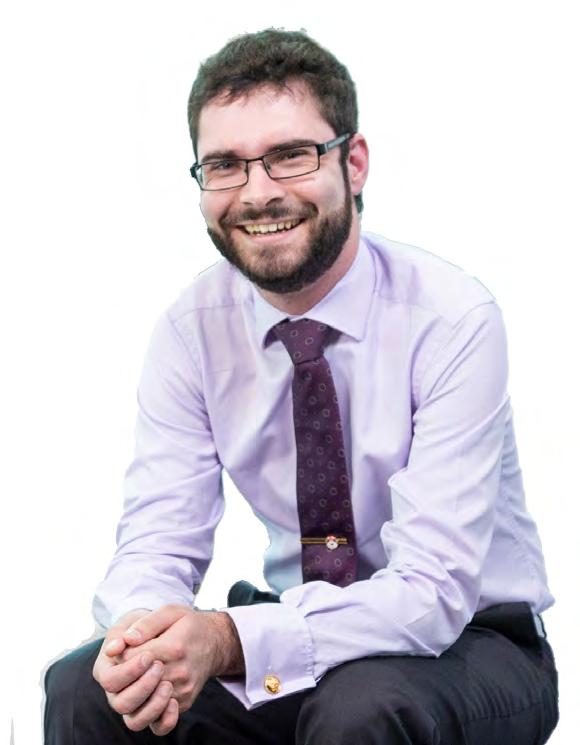


In my early 20’s, I began my career working as an accountant in my home town of Wellington.
I vividly remember a moment when I was helping a florist set up her business on Xero, and she broke down in tears of relief at the realisation her Sundays were no longer going to be spent hunkered down at the table sorting through paper receipts. She would finally have the day back to spend with her two young boys.
It was at that moment I knew my purpose was to help as many small business owners realise the potential of managing their numbers productively, and ultimately get back more time in their day to focus on other parts of their business.
Since my early days starting out in
the industry, I’ve had a rich career working in both New Zealand and Canadian markets.
I was working with one of Xero’s very first partners when they migrated onto the platform, and I witnessed first-hand the impact that technology had on a small business when coupled with an effective advisor.
After spending five years on Canadian soil, I recently made the move back to New Zealand with my family to continue serving Xero partners in my new role as Head of Partner Sales for New Zealand’s go-to-market team.
I feel incredibly proud to be leading our Kiwi sales team in Xero’s home market. Looking to the second half of the year and beyond, we’re focused on providing our Xero partners with
as much value as possible, so they can continue their vital work advising small businesses across Aotearoa.
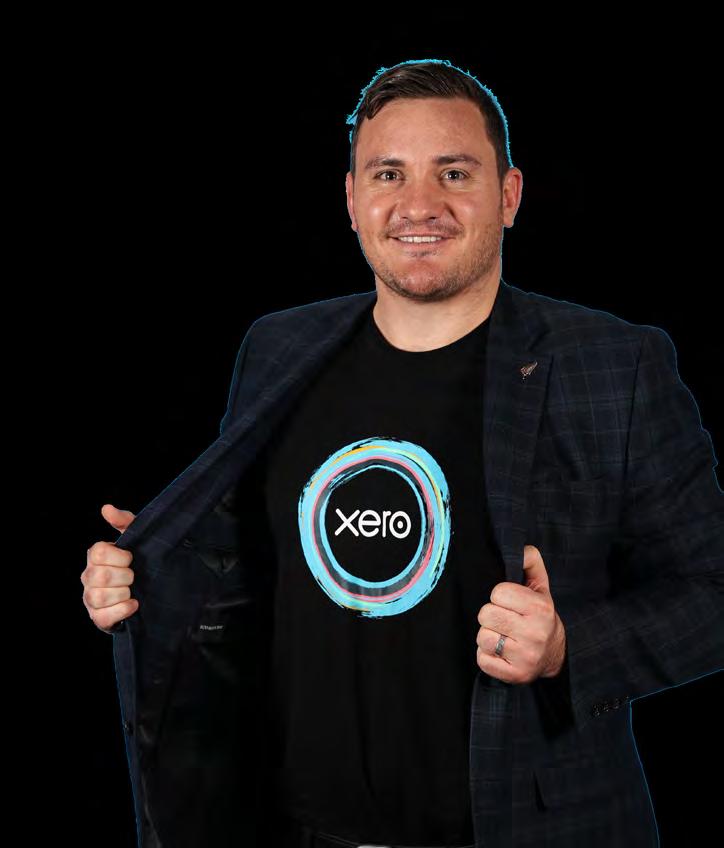

















Despite the run of poor weather in the Bay of Plenty, the sun has been shining on Joel Murphy, a recently appointed partner at Holland Beckett Law. Joel has been inundated with inquires as a result of the current land grab of existing dairy and grazing farms by national and international solar developers. “It is great to see the number of international solar developers looking to come to New Zealand to provide sustainable alternative energy sources from our traditional hydro, wind and geothermal.”
A specialist in large scale solar projects, Joel has a depth of international experience enabling him to provide sound advice to landowners looking for an alternative land use. Joel acts for
multiple landowners throughout New Zealand advising and negotiating large scale solar projects as well as acting for a global leader in utility-scale solar development. “Understanding the drivers behind both landowners and utility-scale solar developers allows me to provide pragmatic advice and solutions to both sensitive and complex projects. The most important thing is that landowners understand both the benefits and risks in converting what may have been a fifth generation dairy farm to a utilityscale solar farm.”
Joel joined Holland Beckett in 2019 after returning from the United Kingdom, working as an in-house counsel for Lightsource BP, a global leader in utility-scale solar development.
In addition to Joel’s specialist solar expertise, Joel also advises clients on all aspects of property, including acquisitions and disposals, leasing, developments, financing, subdivisions and related transactions. He has particular expertise and passion for the kiwifruit industry and residential developments.
Joel is an advocate for the growth of the Bay of Plenty and is a committee member of the Central Regional Committee for Property Council New Zealand.
Outside of work Joel enjoys spending time with his young family, fishing, diving and playing touch rugby.
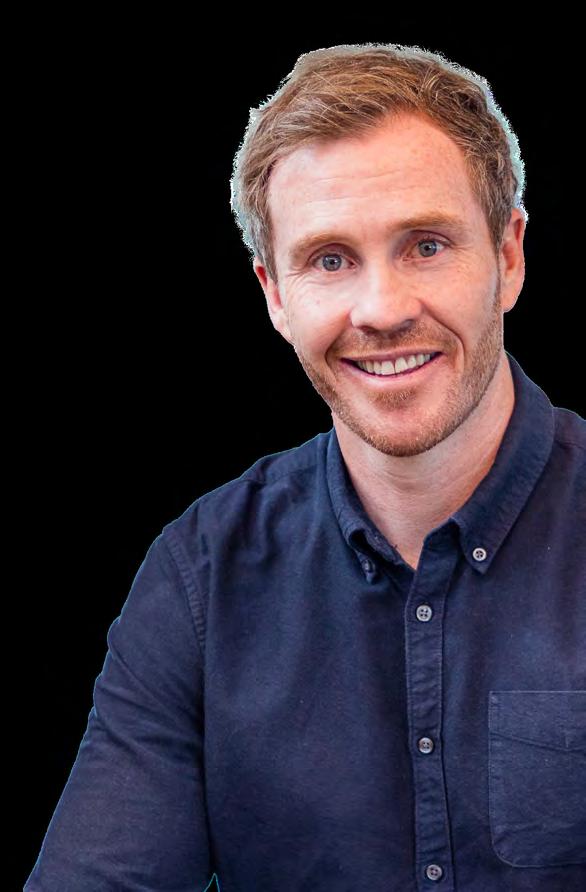
Joel Murphy Partner
DDI 07 570 0682 Mobile 022 345 7761 joel.murphy@hobec.co.nz
Jeremy joined Holland Beckett as a graduate in January 2012, and has become the first law clerk to Partner of Holland Beckett Law.
Jeremy started in the wider litigation department, where he acted on some of the firms major cases including businesses affected by the Rena sinking. Jeremy then spent two years working as a lawyer in London. Upon his return to the Bay of Plenty in 2018, Jeremy has developed into a specialist employment lawyer. Jeremy has grown a substantial employment practice and continues to be sought after by clients for his effective, timely and practical advice: this is from some of the firms biggest clients to the smallest.
Jeremy specialises in both contentious and non-contentious
employment matters, including health and safety, and leads a large team of employment lawyers. Jeremy advises employer and employee clients on all matters relating to employment including resolving employment disputes, personal grievance claims, exit arrangements, restructurings, performance matters, disciplinary issues, sale and purchases of businesses, and preparation of employment agreements, contractor agreements, and policies.
When Jeremy joined Holland Beckett Law in 2012, the headcount was approximately 50 and now the firm has 125 staff. With the support of the Partners, Jeremy has progressed through the firm and in April 2023 he joined the partnership. Identifying leaders who can build a team is what has made Holland Beckett
Law a success and one of New Zealand’s largest regional law firms.
Jeremy deals with employment law issues for his clients every day and he is proud to be a partner of a firm that is committed to attracting and retaining the best and brightest talent.
Retaining and growing staff is the firm’s number one priority. Holland Beckett Law achieves this in a number of innovative ways such as graduate programme cash bonuses or options for paid leave to travel, regular salary reviews, wide ranging CPD options, flexible working arrangements, social and sporting events, wellness package and study benefits.

Trimax Mowing Systems has been developing commercial mowing solutions since the 1980s. From humble beginnings in Tauranga, to a global manufacturer, Trimax has facilities in New Zealand, Australia, the United Kingdom, and United States.
Larissa Hodgson, Trimax Customer Engagement Manager, heads the global marketing teams, sales operations, service strategy and product innovation pipeline.
“We have a wide definition of product innovation. We define our product as the overall experience that our company provides. We’re one of the highest priced manufacturers in the global industry, so not only
do our physical products have to perform, but our service and every engagement with customers’ needs to exceed expectations.”
Trimax has a mixed sales model, selling both directly to customers and distributing through a global retail network of tractor dealerships.
“We made the decision a few years ago to create direct engagement channels, no matter the sales channel. Our founder was out in the field every day with customers, you could see how much value customers placed on this.”
The Trimax team have spent the last few years creating processes which they systemized and scaled to provide improvement at every possible customer touchpoint.
“There’s been a lot of investment in customer resources and platforms, especially to support the thousands of machines out operating in the field every day –apps, e-commerce stores, CRMs and marketing systems that seamlessly integrate with F&O, service programs, troubleshooting and diagnostics, as well as global training.”
Trimax’s direct engagement strategy has increased lead generation and grown aftersales parts revenue which is on track to become the company’s largest revenue stream.
Most importantly it’s provided a customer service model which has created a real advantage that cannot be quickly or easily replicated by competitors.



Brad Walker has been closely involved in the real estate and construction industry for over 20 years. He’s always had a passion to help people meet their goals and make their dreams a reality. His early years working on construction sites provided him with a well-rounded depth of knowledge which he now brings to marketing, selling and purchasing property,
Brad lives in Mount Maunganui, close to the beach, with his wife and their two young children. He grew up sailing, then got into kitesurfing, paddleboarding and diving. He’s passionate about the Bay of Plenty region and its growth.
“I love being on the coast, having stunning beaches on our doorstep and lakes and activities all within easy reach,” he says.“I also get a
buzz from our bustling city and the surrounding region with industries ranging from farming and horticulture to logistics and supply chains, all within easy access.”
Brad has exceptional communication and negotiation skills, an eye for detail and the ability to build, maintain and manage critical relationships. He is committed to using his experience and skills, along with his knowledge of the local and commercial markets to achieve the best outcomes for everyone he works with.
“For me, working with many smallto-medium sized businesses is fun. The people are what make it so interesting. It is refreshing to see the determination, attitude and successes of the very people that continue to keep this country thriving on the world stage.”
Being results-driven, committed to doing the hard yards and benefiting from being part of a national team of commercial agents, Brad aims to achieve the best results for his clients every time.
“I want to continue working on those foundations of solid business relationships: integrity and over delivering on expectations. Nothing makes me more satisfied than achieving results for clients which allow them to move forward with their goals.”
Brad’s advice for property buyers and sellers right now: “Be patient! What you want to achieve now will pay off in the future if you stick at it and surround yourself with the right people. Everyone has a different goal and timeline in their decision making.”
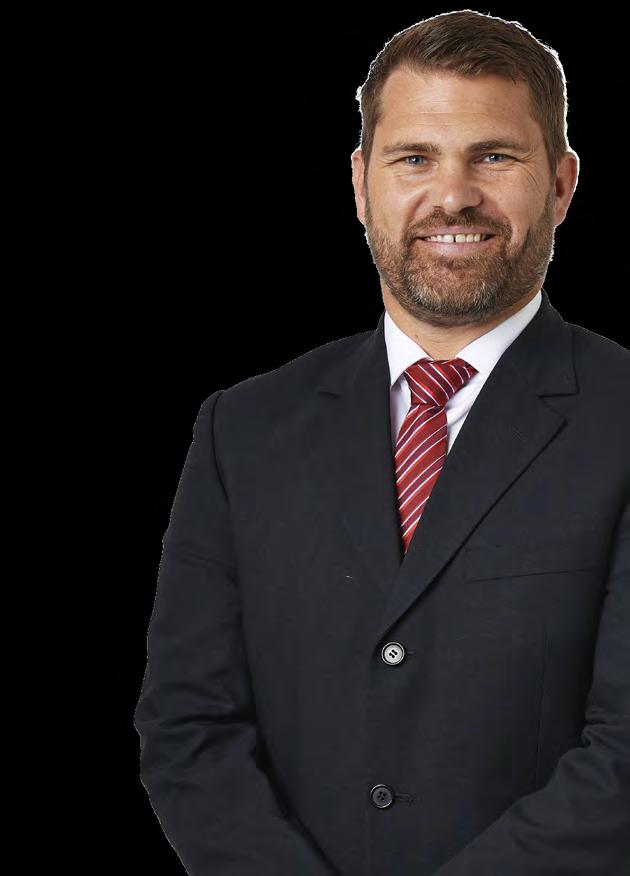

Listed New Zealand produce company Seeka Limited (NZX:SEK) released its second Sustainability Report in July.
The report, which outlines the progress Seeka has made towards the sustainability targets established in 2022 also introduces Seeka’s NZ$201 million Sustainability Linked Loan, which replaces its previous banking facilities.
The acquisition of two post-harvest businesses, Orangewood Ltd and NZ Fruits Ltd during the period, now Seeka Orangewood and Seeka Gisborne, as well as a full-year impact of the 2021 acquisition of Opotiki Packing and Cool Storage Ltd, now Seeka OPAC, have increased Seeka’s absolute carbon footprint to 22,839 tonnes CO2e compared to 19,864 tonnes CO2e in 2021.
The report details Seeka’s response to climate change, with a focus on learning from the number of extreme weather events the company faced over the past year, including floods, frosts, cyclones, and hail, together with the steps Seeka is taking to reduce GHG emissions, operate in a safe environment, care for its communities and company government.
Seeka announced it had completed its banking refinancing at 30 June 2023, into a NZ$201 million Sustainability Linked Loan, with Westpac NZ acting as the Sole Sustainability Coordinator, Agent and Mandated Lead Arranger and Bookrunner.
Seeka’s Chief Executive, Michael Franks, outlined that sustainability is increasingly considered in all business operations and the introduction of the Sustainability Linked Loan further reinforces the importance of sustainability in our business decisions.
It’s perhaps a novel idea after the years of disruption we’ve seen globally, but it’s time for people to “work from work” and get back to the office.
This is underpinning workplace movement in and around the main centres as large occupiers firm-up space requirements and recalibrate to get their teams’ feet under desks in the CBDs once more.
Matt Lamb, Bayleys national director office leasing said significant commitments have already been made by many big occupiers in Auckland, like Spark recently signing up to Mansons new Fifty Albert development, and Beca securing space in Precinct’s new Wynyard Quarter Innovation office development.
With new occupiers entering the market and other established parties starting to show their hand for large tracts of office footprint, the market remains active and vacancy is low.
“Expect to see some big movement by major corporates in the next couple of years as they look to occupy fit-for-purpose space with the benefit of a blank canvas to configure layouts in-line with corporate goals and changing staff demands,” he said.
“This will free up floor plates in the buildings they intend vacating –which leads to opportunity for other occupiers and a chance for landlords to upgrade space to meet new expectations around sustainability, amenity and location.”
Lamb said there are still great opportunities available for proactive occupiers seeking large floor plates within well-located properties that prioritise ESG principles and offer comprehensive amenities for staff.

“Engaging with the Bayleys leasing team early will pay off for any occupier considering a move in the Auckland CBD as we are across all upcoming space and landlord timelines.”
Bayleys Wellington office leasing specialist Luke Frecklington said there are some reasonable-sized deals being done for large space in the CBD and while vacancy is low, with many buildings undergoing seismic upgrade and refurbishment, there are some good opportunities available.
“As some of the high-profile occupiers start to vacate existing office space for pre-committed new builds, there will be further large tracts come to the market for lease,” he said.
“There’s been quite a lot of activity and there’s more to come as the capital is seeing some really encour-
aging business growth.
“Hnry, the accounting software company, is an example of a business that is on the march, and they’ve signed up for large office space for their growing team within the former David Jones building on Lambton Quay.”
Frecklington understands that the new building under development for BNZ in Whitmore Street will have some floors for sublease, and, when the bank does relocate on building completion, high quality space in the three different buildings they currently occupy will become available to back-fill.
There’s a shortage of large office floor plates in Christchurch according to William Wallace, Bayleys general manager South Island commercial and industrial.
“How and where we grow the Christchurch office market is a big
discussion point and we’d expect to see city fringe areas like Sydenham and Philipstown regenerate on the back of locational advantages, capacity for carparking, and emergence of the new Te Kaha multi-use arena,” he said.
“In the CBD, there’s still a pipeline of planned work to be delivered but for developers, it’s the perennial cost versus reward dilemma.
“We’re seeing some movement around the city by a few of the big law firms and there’s a bit of space coming up on the sublease market – such as in the Vodafone building within the Innovation Precinct.” Wallace said the flight to quality, underpinned by growing ESG awareness and desirability of sustainability ratings like NABERSNZ, continues unabated in the Christchurch market – as it does around all of the main centres.

The gurus say you can discover the secret to skyrocketing productivity and workplace success with a simple yet powerful ingredient: happiness. But in the real world, is the drive for happiness helping or hindering the Kiwi business machine?
Stop what you’re doing. Take a full minute to really consider what I’m about to ask you: Are you truly happy?
I’m not talking about the kind of ‘can’t complain I suppose’ contentment that my British compatriots would consider as practically orgasmic. I’m talking about true, deep, quiet, joy.
Chances are, you would say “no”.
I don’t blame you. I would have said the same thing.
After all, we don’t go into business in pursuit of happiness. We embark on an heroic quest for business success. Once we achieve success, then we will be happy.
Or so I thought.
But what if we’ve got the business of happiness totally wrong? What if happiness is not the outcome we seek, but the key to unlocking success beyond our wildest expectations?
Falling off a cliff
For centuries, happiness and the workplace were like an unhappily married couple: They managed to coexist, but everything would be a lot smoother if they could just
lead separate lives.
Work was not a ‘happy’ place. Employees were not supposed to find happiness in their roles. They turned up, did the job, got paid and went home.
But a couple of decades ago, there was a shift in the practice of positive psychology and workplace wellbeing.
Traditionally, the ‘ambulance’ for stressed and unhappy workers was at the bottom of the metaphorical cliff: People only got help when they hit rock bottom.
Then, things changed. Smart leaders started putting support structures – the ‘ambulance’ – at the top of the cliff: Workers got the support they needed to keep them happy and performing at the top of their game, so the sharp performance drop never arrived.
Happiness was becoming a workplace science. The pursuit of happiness was becoming a realisation.
Happiness … guaranteed?
You don’t have to guarantee happiness, you just have to make its achievement a possibility.
Happiness is not something you pursue. It’s not something
you need to hunt down. It’s right in front of you.
Happiness doesn’t come from luck, your network, your expertise or talents. It certainly doesn’t come from your circumstances.
It doesn’t come from a promotion, a new client, a sales win, a pay rise or your LinkedIn post going viral.
Happiness is created by the simple things you do every day.
All the small things
People are usually miserably busy and looking for a breakthrough – the silver bullet in their life or business that will make the happiness bell ring. But if you truly want to discover the joy in what you do, the secret lies in the power of small, consistent actions that compound over time.
These may include:
• Practising gratitude: Taking a few minutes each day to reflect on and express gratitude for the positive aspects of your life. Recognising what you are grateful for, fostering a sense of appreciation and shifting your focus to the positive aspects of your role helps you embed the sense of

satisfaction.
> BY FREDDIE BENNETT
Guinness World Record Holder, podcast host and bestselling author, Freddie is known as ‘The Profit Hunter’. He helps business owners enjoy more time, money and freedom by discovering and extracting hidden profits in their companies. Freddie@conqueryourmedia.com
• Moments that matter: Identifying and incorporating moments of mindfulness into your day. Be fully present in the moment and observe the world around you. This simple practice cultivates a sense of calm and clarity amidst the chaos.
• Acts of kindness: Engage in small acts of kindness towards colleagues, customers, and clients. Yes, that actually means doing something nice … for free. These gestures create a positive ripple effect, boosting both your happiness and the recipient’s.
• Learn (or teach) something new: Cultivate a growth mindset by learning or teaching something new every day. It is the process of developing mastery for ourselves, or cultivating mastery in others that allows us to feel part of something bigger than ourselves.
• Celebrate wins: Acknowledge and celebrate the accomplishments of your-
self and your team, no matter how small. Recognise your progress and give yourself credit for the steps taken towards your goals. This fosters a positive mindset and boosts motivation. But this is only half the story, happiness is achieved by the things you don’t do every day.
If small daily actions can create happiness, the opposite is also true. As Newton’s third law states: Every force has an equal and opposing force. There are a number of daily habits you’re cultivating that can be destroying your chances of happiness:
• Dwelling on negativity: Constantly focusing on negative thoughts, dwelling on past failures, or engaging in self-criticism can diminish happiness over time.
Late last month, the Tauranga City Council Commission approved the most significant investment in community facilities the city may ever see, with the redevelopment of the civic precinct given the green light.
By ANNE TOLLEY, Tauranga Commission Chair
amed Te Manawataki
No Te Papa – the heartbeat of Te Papa – this $306 million redevelopment will see the construction of a new library and community hub, civic whare (community meeting house), museum and exhibition gallery on the central city block bounded by Wharf, Willow, Harington and Durham streets. Associated landscape and waterfront improvements will also add to a greatly enhanced city centre environment.
A business case for this development received at the Council meeting on 24 July clearly outlined the significant benefits the development would create for the city, its residents and the wider subregion.
Of particular importance is the impact Te Manawataki o Te Papa would have on the revitalisation of the city centre, with an expected tripling of visitor numbers (to 5,500 people a day, or 2,000,000 visits a year) by 2035. By comparison, current foot traffic counts in The Strand/Wharf Street area are around 1,600 people a day.

In economic terms, that is expected to increase the present value of local and regional economic output by around $500 million, with wider benefits totalling a further $500 million over the life of the buildings.
Part of the reasoning behind the development is also to encourage greater inclusiveness, a sense of belonging and cultural awareness and identity and in that regard, the museum and library/community hub
facilities are expected to have a considerable impact, with over 300,000 and 800,000 visits respectively each year. As a result of that community involvement, it’s anticipated that by 2035, most residents would have a greater sense of pride in their city and would therefore be prepared to recommend it as a visitor destination.
All of that additional activity will contribute significantly to city centre GDP, generating
wider economic benefits of up to $1.37 billion (in net present terms) over the next 60 years.
As part of that equation, a more attractive city centre is expected to support further high-density accommodation development, with around 3,000 extra people living in the area, plus around 600 extra businesses opening up within the 60-year timeframe.
There is of course a price tag for this development and one of the key challenges the
Commission set for the proposal was that, in addition to the benefits being demonstrated, the financial strategy behind Te Manawataki o Te Papa also had to stack-up.
Since we rebooted the civic precinct project in 2021, a number of ongoing national and global challenges have been encountered, such as Covid-19, escalating construction costs, and a rise in inflation and interest rates.
Given these challenges, it’s
• Living in the past or future: Constantly dwelling on past regrets or worrying excessively about the future can rob one of the joy and contentment found in the present moment.
• Holding onto resentment and grudges: Harbouring resentment, holding grudges, or refusing to forgive others can create a negative emotional burden that hinders happiness.
You choose you
In the end, the business of happiness is not a solitary endeavour but a shared mission. Together, you and your team can uplift, support, and empower one another on this transformative path. Choose happiness. Live it. Share it. Remember, it’s not something you pursue. It’s something you can create. Immediately. Happy now?
• Comparison and envy: Constantly comparing oneself to others, feeling envious of their achievements, or focusing on what one lacks rather than appreciating what they have can lead to unhappiness.

really pleasing to see that our development partners, Willis Bond, are confident they can deliver the civic precinct programme of work within the overall approved budget of $306.3 million.
The initial commitment we made was that the rate-funded debt for the project would not exceed $151.5 million.
We are confident that a sound financial strategy now exists, which will ensure all the funding required is achievable.
TECT’s recent approval of a $21 million grant towards Te Manawataki o Te Papa – the Trust’s largest-ever contribution to a single project – represents a huge step towards achieving the project’s wider investment targets.
Together with the $12.1 million in central Government Better-Off funding we received last year, this puts us in a good position to reach our goals and we will be leaving ‘no stone unturned’ in our efforts to secure the financing required.
We hope the business community will join with Council to help make Te Manawataki o Te Papa a reality and support the revitalisation of our city centre.
Chartered accountants around the country are pleased to see changes that will address the long-standing unfair tax treatment of New Zealanders who receive backdated lump sum payments from the Accident Compensation Corporation (ACC), says CA ANZ NZ Tax Leader John Cuthbertson FCA.
As detailed in the latest taxation omnibus Bill, the tax liability on backed lump sum payments is set to be calculated on an averaged basis over a four year period, rather than solely in the year of receipt.
“Under current tax law, if an individual receives a backdated lump sum payment from the ACC, they are taxed in the year that it is received, at their marginal tax rates, even if the sum relates to compensation from earlier years,” said Mr Cuthbertson.
“That means more of the payment goes back to the Government, and less to the individual, which is just plain unfair.”
“It’s a familiar scenario for many kiwis who have an accident, suffer a serious injury, and then been in dispute with ACC about eligibility for compensation, or the amount of compensation.”
“These disputes can take multiple years to resolve so when the payment finally comes through it can bump them into the next tax bracket and beyond. It’s unfair, because if there hadn’t been a dispute, they would have been paid out across multiple years and would be much less likely to shift the client into a higher marginal tax bracket.”
Between 2012 and 2016, over 6,000 clients won their ACC decision reviews, some of which ran over multiple years.
“The proposal is that a backdated lump sum ACC payment will be taxed at the individual’s average tax rate, calculated as if the payment had been spread over the preceding four years.”
“Having an accident and being off work is stressful enough, without a tax technicality taking more of your money. This has been a longstanding issue that we’ve raised so we’re pleased to see this change.”
Mr Cuthbertson provided an example of the current legislation’s unfairness.
“Say someone on an annual salary of $68,000 - just under the up to $70,000, 30% tax bracket - has a serious accident, can’t work, and applies for ACC. For whatever reason there’s a dispute, which is resolved 3 years later, and they get a lump sum payment of 80% of their salary over that period, which comes to $163,200. Unfortunately, that shifts them into the 33% tax bracket, due to no fault of their own, and they’re going to pay a significant chunk - over $93,000 - at the higher 33% tax rate. That’s been the situation for many kiwis over the years and it’s not fair. And it’s not uncommon for the sums in question to be bigger, and the disputes to run much longer.”
“However, we are not quite there yet, as the proposed change is only intended to apply to payments made from 1 April 2024. This is a cruel and unsatisfactory outcome for pre-1 April 2024 recipients, who if they are aware of the proposed change, would not push ACC to settle their claim in the remaining months.”
“It’s CA ANZ’s view that the solution should apply to payments made on, or after the date that the proposed changes were announced (18 May 2023), or that any ACC recipients who received a payment during the year ended 31 March 2024 should be eligible for the new tax treatment,” concluded Mr Cuthbertson.

Cash flow has long been a challenge for small businesses in the Bay of Plenty and across Aotearoa New Zealand. With recent inflation, steep interest rates and reduced consumer spending, it’s apparent small businesses are walking a tightrope every day.
To better understand perspectives and behaviours towards cash flow management, Xero surveyed small business owners across Aotearoa New Zealand and the results were concerning to say the least.
A staggering 46% of business owners and 60% of sole traders aren’t paying themselves in order to keep their business running.
Additionally, over half of Kiwi small businesses (52%) have increased prices to cover their cash flow challenges, while a similar number (48%) have looked to review and remove costs.
It’s clear our small business owners are facing significant financial stress and as a result, it’s beginning to take a toll on both their emotional and physical health.
Cash flow is one of the biggest hurdles our small business owners are facing and Kiwis need to be aware of the sacrifices they’re making to persevere through this challenging time.
When small business owners experience cash flow issues, the first thing to go is their own pay.
In this current cost-of-living crisis, this puts our small business owners in a vulnerable position.
The inability to pay suppliers often comes next, having a knock-on effect throughout the economy.

> BY BRIDGET SNELLING
Bridget Snelling is the Xero Country Manager for New Zealand

It’s a fragile cycle which can see business owners in the Bay of Plenty and across the country using their personal savings, working unsustainable hours, and sacrificing their own wellbeing to keep the business running. When asked about the emotional and physical impacts of cash flow management, business owners reported feeling stress (80%), anxiety (70%), trouble sleeping (60%) and losing time with friends and family (47%)
over the past 12 months.
The research also revealed 94% of small business owners weren’t achieving their business goals, and 90% of those feeling less confident they’ll meet their financial obligations are suffering from stress.
This shows us how closely business goals and financial health are connected to the stress and anxiety of our small business owners.
Across the country, infla-
tion has heightened cash flow struggles, with 48% claiming it had a high impact on their cash flow management these past six months.
These figures are a worrying sign for the future of our small business community and highlight the need for change.
It’s no secret late payments are one of the biggest contributors to small business cash flow issues. In fact, last year we found late invoice payments were costing Kiwi small businesses $456 million annually.
Getting paid on time is crucial for small business operations, and this largely relates to big businesses paying their invoices on time.
That’s why at Xero, we’ve challenged big businesses to commit to paying invoices within 10 working days. This will not only help our small business community but strengthen the New Zealand economy as a whole. However, it doesn’t just come down to big businesses, small business owners have the power to take matters into their own hands and tap into digital tools to help manage cash flow.
Whether it’s for planning, forecasting, or even invoicing, it’s time to make the most of the digital tools available.
There is a lot to consider when looking to make the jump from employee to franchisee entrepreneur. Amongst concerns that come to mind for most are the economy, interest rates, access to staff, consumer confidence, election cycles and a myriad of possible scenarios, most of which are beyond the control of the individual, and generally macro issues that affect every business.
Something new that we are seeing is potential franchisee entrepreneurs creating their own barrier to entry by their expectations. It goes something like this: potential franchisee has decided that they want to be in business for themselves and have narrowed their search to a category or brand, when they find out that they are under-capitalised to buy into the brand or category they decide, “I’ll keep working until I have the funds”.
In my view these budding entrepreneurs are unnecessarily delaying their entry into franchise ownership. When you jump on the property ladder most people do not buy their dream house as their first, nor do you start you career and jump into your dream senior role - in both cases the path is not to sit on the side-lines but to develop skills, build equity, and benefit from being in the game.

> BY NATHAN BONNEY
Nathan Bonney is a director of Iridium Partners. He can be reached at nathan@iridium.net.nz or 0275-393-022
The same approach should be applied to franchisee ownership and here are my top five reasons why:
Learn how to run a business
By jumping into a smaller business, the franchisee entrepreneur will develop skills and experience from owning and operating the business. Even if they are employed in a similar industry, there is no substitute for running your own business.
Learn how to get the most out of working within a franchise system
Being in a franchise is a unique business format. It’s not for everyone, and not everyone can really make the most of the system. By starting small, you can hone your skills and learn to work within a system. Franchises also provide the ability to benchmark
– you can know how well you are doing against your fellow franchisees in that system.
Build an asset and create capital gains
Much like jumping onto the property ladder, by successfully owning and operating a smaller franchised business, a budding franchisee entrepreneur can build value and equity in the business and in turn create capital gains on exit. The latter can be the critical distinction versus working to build capital.
Reduce risk, increase your ability to fund in the future
Business is not without risk, and this is usually a major consideration for people investing into a franchised business for the first time. There is risk associated with business, as well as with an individual’s ability to own
and operate a business. By starting in a smaller business, with a lower investment level, risks are reduced.
Additionally, if a franchisee can successfully operate a business within a franchise format, it will potentially assist them with funding a larger, higher investment level franchise in the future.
There is always more money, there’s never more time
Economic considerations will change over time, but two factors will always remain; there is always the ability to earn more money either as an employee or by owning and building your own business, but there will never be more time. So, if ultimately owning and operating our own franchise business is your goal, starting small and growing could be the strategy for you. My question to you now is, “What are you waiting for?”

> BY VARUN PARASHER
Varun Parasher is a technical engineer at Stratus Blue with a passion for cybersecurity. He can be contacted at varun@stratusblue.co.nz
e are all aware of the impacts of cybercrime on people and businesses in Aotearoa. Indeed, it is a regular topic of this column but I make no apology for raising it once again. According to Cert NZ, the average number of cyber incident reports per quarter is 2191 resulting in an average direct financial loss of $4.9 million.
In the Bay of Plenty a lot of us enjoy fishing. However, increasing numbers of us are being targeted by the other type of Phishing.
Phishing attacks aim to deceive people into revealing sensitive information, such as passwords, credit card details, or personal identification numbers (PINs). CERT NZ’s 2023 Q1 report states that out of 1968 reported incidents, 946 were Phishing and credential harvesting.
Phishing comes in a number of forms:
Classic email phishing –Cybercriminals send deceptive emails that mimic legitimate organisations or individuals, tricking recipients into divulging confidential information. These emails often contain urgent requests, enticing users to click on malicious links or provide personal details.
Spear phishing – This is a more targeted and sophisticated. Cybercriminals gather information about specific individuals or organisations and tailor their attacks accordingly. By using personalised messages or posing as trusted contacts, attackers increase the likelihood of success. These attacks have been known to target government officials, executives, or employees with access to sensitive data.
Smishing – A combination of SMS and phishing – attackers send text messages containing malicious links or ask recip-

ients to reply with personal information.
Who is being targeted?
Phishing attacks often target employees of organisations, seeking access to sensitive company data or credentials. By impersonating colleagues or high-ranking executives, cybercriminals aim to exploit human vulnerability and gain unauthorised access to corporate networks.
Elderly individuals, who may be less technologically savvy, are often targeted by phishing scams. Financial organisations are also common targets. Cybercriminals send emails or text messages disguised as legitimate financial institutions, attempting to trick recipients into disclosing their online banking credentials or other sensitive information, leading to unauthorised access to bank accounts and financial loss.
What can I do to protect myself?
Be wary of suspicious emails. Exercise caution when receiving emails from unfamiliar senders or those requesting personal information. Look out for misspellings, grammatical errors, or generic greetings. Legitimate organisations usually address customers by name and use professional language.
Verify the sender’s identity. Before clicking on any links
or providing sensitive information, verify the sender’s identity. Hover over links to reveal the actual URL (web address) and ensure it matches the organisation’s legitimate website. If in doubt, contact the organisation directly. No financial institution, especially banks, would ask you for your password.
Avoid clicking on suspicious links. Do not click on links in emails or text messages that seem suspicious, especially those asking for personal information. Instead, manually type the organisation’s web address into your browser or use a trusted bookmark.
Keep security software updated. Regularly update your antivirus and anti-malware software to protect against the latest threats. These tools can detect and block phishing attempts, providing an extra layer of security.
Enable multi-factor authentication. Wherever possible, enable multi-factor authentication (MFA). MFA adds an extra layer of protection by requiring two or more forms of authentication, such as a password and a unique verification code sent to your mobile device.
Regularly back up data. Phishing attacks pose a significant threat to all of us. Recognising the different forms of phishing and implementing preventive measures is crucial in protecting personal and financial information from cybercriminals.

> BY STEVEN VINCENT
Steven Vincent is the founder of GoTo Car Share. He can be reached on steven@goto.nz
he top 20 cities around the world for transportation and mobility all have one thing in common. They have all invested in various transportation options, including extensive public transportation networks, well-developed cycling infrastructure, walkable neighbourhoods, and innovative mobility solutions. Their metropolitan areas also have populations of over a million people.
Small cities, like Tauranga, face unique traffic challenges due to their limited resources and infrastructure compared to these larger metropolitan areas. However, several approaches can be adopted by small cities to mitigate their traffic problems and technology can play a big role in improving transportation efficiency.
Real-time data, enhancing traffic management systems, and promoting more efficient transportation options are some ways technology can be used to achieve this. Here are some of these technologies in more detail:
Intelligent traffic signal control
Implementing smart traffic signal control systems that use real-time data to adjust signal timing based on traffic conditions can help optimise traffic flow at intersections. These systems can reduce congestion and improve overall traffic efficiency.
Traffic data and analytics
Utilising advanced traffic monitoring technologies, such as cameras, sensors, and GPS data, can provide valuable insights into traffic patterns and congestion hotspots.
Analysing this data can help city planners and traf-
fic management authorities make informed decisions to improve traffic flow.
Mobile apps for navigation route planning
Navigation apps with realtime traffic updates, like Google Maps or Waze, can guide drivers to less congested routes, diverting traffic away from heavily congested areas and spreading the traffic load across the road network.
Smart parking solutions
Implementing smart parking systems that provide realtime information from parking sensors about available parking spaces can help drivers find parking quickly.
Way-finding screens can direct traffic to available parks and reduce the time spent searching for parking, which can contribute to traffic congestion.
Parking technology can be installed in on-street and off-street parking locations, and can also inform decisions about car park volume and location planning.
Public transportation apps
Mobile apps that offer realtime information about public transportation schedules, routes, and vehicle locations can encourage more people to use public transit, reducing the number of vehicles on the road.
Ride-sharing and carpooling platforms
Technology-enabled ride-sharing and carpooling services can help reduce the number of single-occupancy vehicles on the road by facilitating ridesharing arrangements, especially during peak hours.
Real-time traffic information displays
Electronic message boards and dynamic signage that provide real-time traffic updates can inform drivers about road conditions, accidents, and alternative routes, allowing them to make informed decisions while on the road.
Predictive traffic modelling
Utilising predictive analytics can help forecast traffic patterns and congestion, enabling authorities to take proactive measures to prevent or mitigate traffic issues.
Connected vehicle technology can enable vehicles to communicate with each other and with traffic infrastructure, optimising traffic flow and reducing accidents. Additionally, the integration of autonomous vehicles could potentially lead to more efficient and safer traffic management. By harnessing technology in these ways, I believe that cities like Tauranga can create more efficient and sustainable transportation systems, reduce congestion, and improve overall mobility for residents and visitors alike. While we have begun to implement some of these technologies in Tauranga we still have a way to go before we can be on the same page as cities such as Helskini and Singapore who lead the way in multi-modal transportation. As we navigate our journey of mode-shift and enhancing our current options for travel around our city, could we put technology at the centre of every decision and set our goal for Tauranga to be in the top 20 cities in the world for transportation and mobility within the next decade?
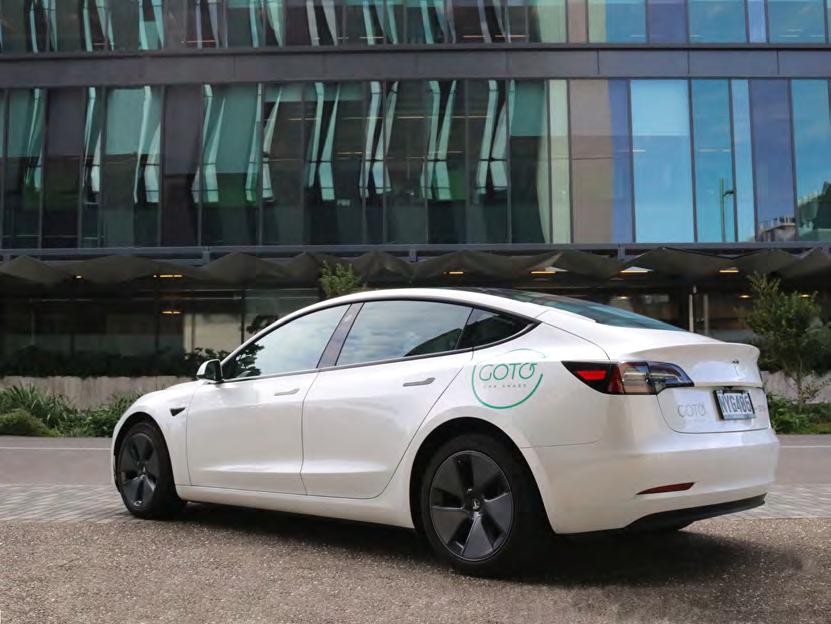

> BY ALAN NEBEN
Alan Neben is a Mount Maunganui local and experienced New Zealand publisher. His columns provide a light-hearted perspective on social changes effecting New Zealanders.
he world has changed.’ This statement, more than any other, has repeatedly wheedled its way into my columns in the last three years.
Human lives have always evolved and changed, from generation to generation –that’s the nature of human evolution. That’s progress. Humans adapt and learn to do things in ways that afford security, enjoyment, safety, sustenance, and satisfaction. As a species we generally consciously strive to enhance our physical, mental and emotional wellbeing, though the three are not always in balance.
The wheel was invented about 7,000 years ago, and 3,000 years later horsedrawn carts started to really speed up travel and haulage. Fast forward another 4,000 years and we have cars with wheels driven by engines containing numerous other variants of smaller wheels.
During that period of advancement several hundred generations of humans were able to slowly adapt to the changes brought on by the wheel. No problem.
But now problems brought on by change are emerging daily. Change is happening fast – really, really fast – and we no longer have the luxury of learning from our forebears how to adapt and best deal with change.
The speed of change is causing social groups to

splinter and fracture – goths, punks, neo-Nazis, conspiracists, antivaxxers, greenies, surfers, skaters, emos, Ls, Gs, Bs Ts, Qs, +s, … music, fashion, religion, media have all splintered into sub-cultures and new genres. I learned from my father how to change the spark plugs in my car. He learned from his great grandfather how to shoe a horse. That was the power of intergenerational learning.
But have you (or your grandfather, or great grandfather) taught your kids how to make a Tik Tok, deal with a troll, ghost an epic fail Bumble hook-up or manage extreme social anxiety? Nah. Almost certainly, ‘nah’.
Because they already know more than you about ‘that stuff’ and, well, forget grandad, he’s still changing
his own spark plugs.
The world is just changing too fast for the last generation to be able to pass on useful advice to the next.
Now I can’t even find the spark plugs in my car (the dealership says don’t bother opening the bonnet other than to add wiper fluid) and when I go EV, there won’t even be spark plugs to find. As for shoeing my horse, well that’s seriously not a biggie for me nowadays.
Which does make me wonder, “will it all end up coming to a grinding halt, the way an ice age turned back the clock (so to speak) for previous civilisations?”
I recently heard an expert suggest the answer to stopping students using ChatGPT for exam and essay assignments is to go back to requiring hand-written content.
There is no better illustration of the speed of change than the uptake of the ChatGPT.
And no better illustration of the inadequacy of our ‘last-generation’ response to its misuse than the recommendation that we go back to pen and paper.
I wish I had a better solution. I don’t. Sorry.
Maybe it’s time we all took my grandfather’s advice – he was always adamant there was nothing a cold shower and a hard day’s work wouldn’t fix.
Then again, the world has changed since his day.

> BY NICK KERR
Nick Kerr is regional manager for Debt Free and director of International Private Investigations Ltd. He can be reached on 021 876 527 and nick.kerr@debtfree.net.nz
n the business world, time is money, but more importantly, money is money. Prompt payments are crucial for maintaining a healthy cash flow and ensuring the smooth operation of any enterprise.
While it’s seen as being charitable to give people a second chance when they are late, or don’t pay, there are compelling reasons why swift collection action is a more prudent approach, especially in these times, according to the latest Centrix data. Key July 2023 Centrix highlights are as follows:
• The number of people that are behind on their payments has improved to 414,000.
• Mortgage delinquencies fell slightly in June but are still up 34% year-on-year.
• Consumers under the age of 25 are among those hardest hit by the cost of living crisis.
• Company liquidations are continuing to rise, up 36% year-on-year, 1,790 this year so far as of the time of writing with the majority being businesses in construction, retail and manufacturing. What this means is people and businesses are accessing credit in increasing numbers. This indicates a lack of free cash on hand – while credit is ‘all well and good’, it has to be repaid, which makes the ability to react to unforeseen costs or incidents much harder while repayments are being made. This is being played out in the construction sector where liquidations and losses suffered by the trades are radiating through ancillary industries.
Requiring a deposit, having set charge services paid upfront, and keeping the aged trial bal-
ance with an empty 90+ column are all things that can make a real difference.
People know when they owe you: if they aren’t talking and aren’t paying then escalation is necessary. By taking immediate action regarding non-payment, businesses send a clear message that they value punctuality and responsibility. Establishing a reputation for being firm but fair with late payers encourages accountability among clients and customers. This practice creates a stronger business culture and minimises instances of non-payment in the future; basically, only reward the behaviour that you wish to continue.
Although it may seem counterintuitive, swift collection action can actually help preserve professional relationships. When businesses fail to act promptly on late payments it can take a toll on the trust and respect they have established with clients and customers. However, by addressing payment issues immediately, businesses demonstrate their commitment to professionalism and fairness which can strengthen relationships rather than damage them.
Collecting outstanding payments in a timely manner is also a form of risk management. By not allowing overdue accounts to accumulate, businesses can quickly identify and address any financial instability. This proactive approach helps prevent potential losses and provides an opportunity to assess the creditworthiness of clients mitigating the risk of future non-payment incidents.
A business that takes decisive action when faced with non-payment is more likely to be per-
ceived as reputable and reliable by both suppliers and customers. Maintaining a reputation for being prompt and professional in financial matters fosters trust attracting new clients and vendors. This positive image can have a substantial impact on the overall success and growth of the business.
While it may feel kindhearted to give people second chances in business , in the long run it never really works out in my experience – the number of large debts we have seen at Debt Free where the account is 365 days aged because they were trying to “give the guy a break” would make your eyes water. Now, instead of releasing the pressure, it is compounded not only in terms of debt size, but also in terms of impact to the relationship; the debtor will be so embarrassed by their actions, despite your “being good about it”, that the chances they will ever return to your business is probably best expressed by a very round number.
Ultimately swift collection action is a vital component of maintaining financial stability and securing the long-term success of any business venture. A business carrying the weight of excessive debt / unpaid invoices simply cannot be as agile and sustainable as one that isn’t – it is that simple.
So, have your credit management system set up to a best practice standard, utilise credit data to make decisions, have an advisor you can trust and have a recovery company that you can refer debts onto without delay. This will give you the best possible chance.
Just a thought.
The recruitment industry in New Zealand, much like in other parts of the world, is constantly evolving and adapting to new technological advancements. Over the past few years, one of the most transformative technologies that has emerged is Artificial Intelligence (AI).
AI has the potential to challenge and reshape the recruitment landscape in New Zealand, presenting both opportunities and challenges for employers, job seekers, and recruitment agencies.
Firstly, I’ll go through some of the perceived advantages of utilising AI in your recruitment processes.
Enhanced candidate sourcing and screening
AI-powered tools can significantly improve candidate sourcing and screening processes. These tools can quickly scan through a vast number of resumes and identify top candidates based on specific criteria and qualifications set by employers. This not only saves time but can also ensure that the hiring process is more effi-
cient and effective.
Human bias is a significant concern in the recruitment process. Unconscious biases can influence decision-making and lead to discriminatory practices, hindering diversity and inclusivity. AI, when designed and trained properly, has the potential to reduce bias by making recommendations based solely on objective criteria and qualifications.
AI-driven algorithms can analyse a candidate’s skills, experience, and preferences to offer personalised job recommendations. This not only assists job seekers in finding suitable opportunities but also helps employers in reaching the right candidates for their vacancies more efficiently.
Streamlining administrative tasks
Recruitment involves various administrative tasks, such as

>
BY KELLIE HAMLETT
Talent ID are Recruitment Specialists and can support you through your recruitment process. Please feel free to talk to us about this by calling 07 349 1081 or emailing kellie@talentid.co.nz
scheduling interviews, sending follow-up emails, and managing candidate databases. AI-powered chatbots and virtual assistants can handle these mundane tasks, freeing up recruiters’ time to focus on building relationships with candidates and developing more strategic recruitment strategies.
AI can be utilised to assess candidates’ skills accurately. Automated skill assessment tests can help employers gauge candidates’ abilities in specific areas, ensuring a better match between job requirements and individual capabilities. Moreover, AI-powered training plat-
forms can offer personalised learning experiences, upskilling the existing workforce and ensuring they remain competitive in an ever-changing job market.
I’ve outlined some of way in which AI can assist, so what are some of the challenges we may also face with adopting AI into our businesses.
Data privacy and security
AI relies heavily on data, and in the recruitment context, this means handling a vast amount of sensitive candidate information. Ensuring data privacy and security is of utmost importance to prevent any potential misuse or breaches that could harm both candidates and employers.
While AI has the potential to reduce human bias, it can also inherit biases present in the data used to train it. For instance, if historical hiring practices were biased, the AI algorithm could perpetuate these biases, leading to unintentional discrimination. Constant monitoring and regular audits are necessary to identify and correct any biased behaviour in AI systems.
Loss of human touch
Despite the efficiency gains, some candidates might find the use of AI in recruitment alienating. The lack of human interaction at certain stages of the process could lead to a sense of detachment and this could
quite well affect candidate experience negatively.
Inclusivity and accessibility
AI-powered tools and platforms might not be accessible to all candidates, especially those with limited access to technology. It is crucial to strike a balance between technological advancement and inclusivity in the recruitment process. AI is undeniably transforming the recruitment industry in New Zealand. As technology continues to advance, it is essential for employers and recruitment agencies to embrace AI responsibly and ethically. By leveraging the potential benefits of AI while remaining vigilant about its challenges, New Zealand’s recruitment industry can evolve into a more efficient, inclusive, and diverse ecosystem that matches the right talent with the right opportunities. It is the careful integration of human expertise with AI-driven insights that will pave the way for a successful and mutually beneficial future for candidates and employers alike.
“
I would, without hesitation, recommend Fosters.
”
Dr

Plastic and reconstructive surgeons Brandon Adams and Adam Bialostocki know the importance of precision and attention to detail.
So, when it came to finding a construction company to fit out their new Da Vinci Plastic Surgery Clinic, they put their trust in Fosters.
The business partners had already purchased a 300m² ground-floor space inside Tauranga’s new Vantage building at 359 Cameron Rd, which Fosters was building.
“Grace Hospital, a private hospital here in Tauranga, had a large project undertaken by Fosters recently,” said Brandon. “Because I do some of my work at that hospital, I’d seen the quality of work that was done, and I knew they (Fosters) could deliver medical facilities to an excellent standard.”
“And they were able to carry out the clinic fit out concurrently with the building project, which was a big advantage for us. It meant we could move in six months earlier.”
The new clinic had to meet specific electrical, plumbing and air quality standards, while incorporating sound proofing and ensuring patient privacy.
Adam said the Fosters team worked closely with their architect and interior designer to provide valuable input from the beginning.
“The design was ours but there was discussion along the way, and we benefitted from Fosters’ building expertise,” he notes.
“Their communication was excellent and so were their processes. They were also extremely accurate with their cost estimates.”
Key for Brandon was Fosters’ ability to mitigate Covid supply chain problems.
“Because they are a large organisation, when they needed to flex workforce and manpower to maintain timeframes, they did. This was critically important for us,” he said.
Brandon adds that he particularly appreciated the company’s proactive approach to problem solving and would work with them again “without a doubt”.
“I would, without hesitation, recommend Fosters,” he said.
Looking for help with a construction project? Call Fosters on 07 570 6000.



Wish your agency had the team to dream big and deliver work like this? Over the last few months we’ve helped inspire Hamilton, Kirikiriroa for the FIFA Women’s World Cup 2023TM, launched new products, created stories of our rural heartland, developed fresh thinking for New Zealand’s favourite events and helped many local businesses reimagine their brands. Busy and happy. That’s us. See our 2022-23 season of work at kingst.co.nz and get in touch to make ideas a reality.